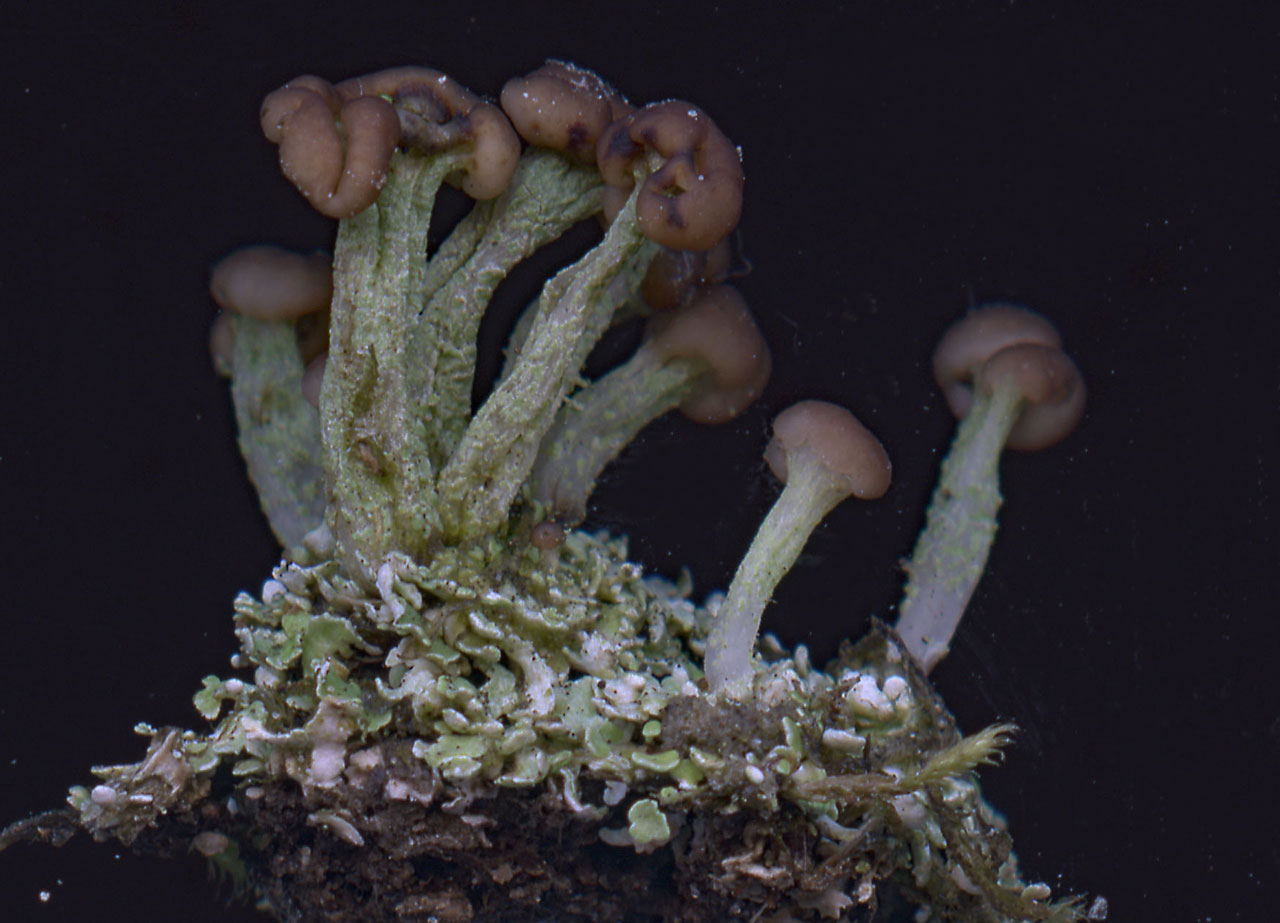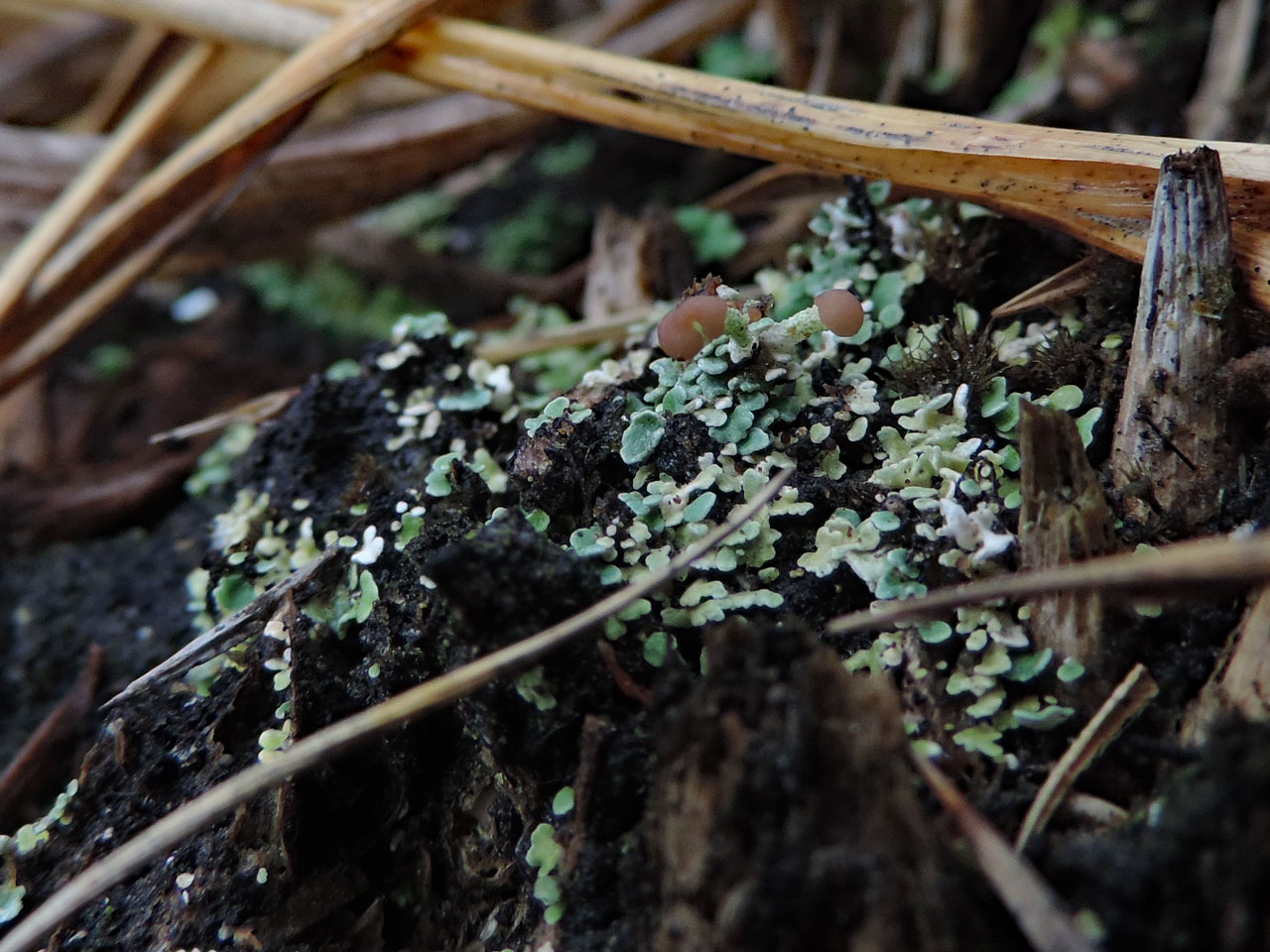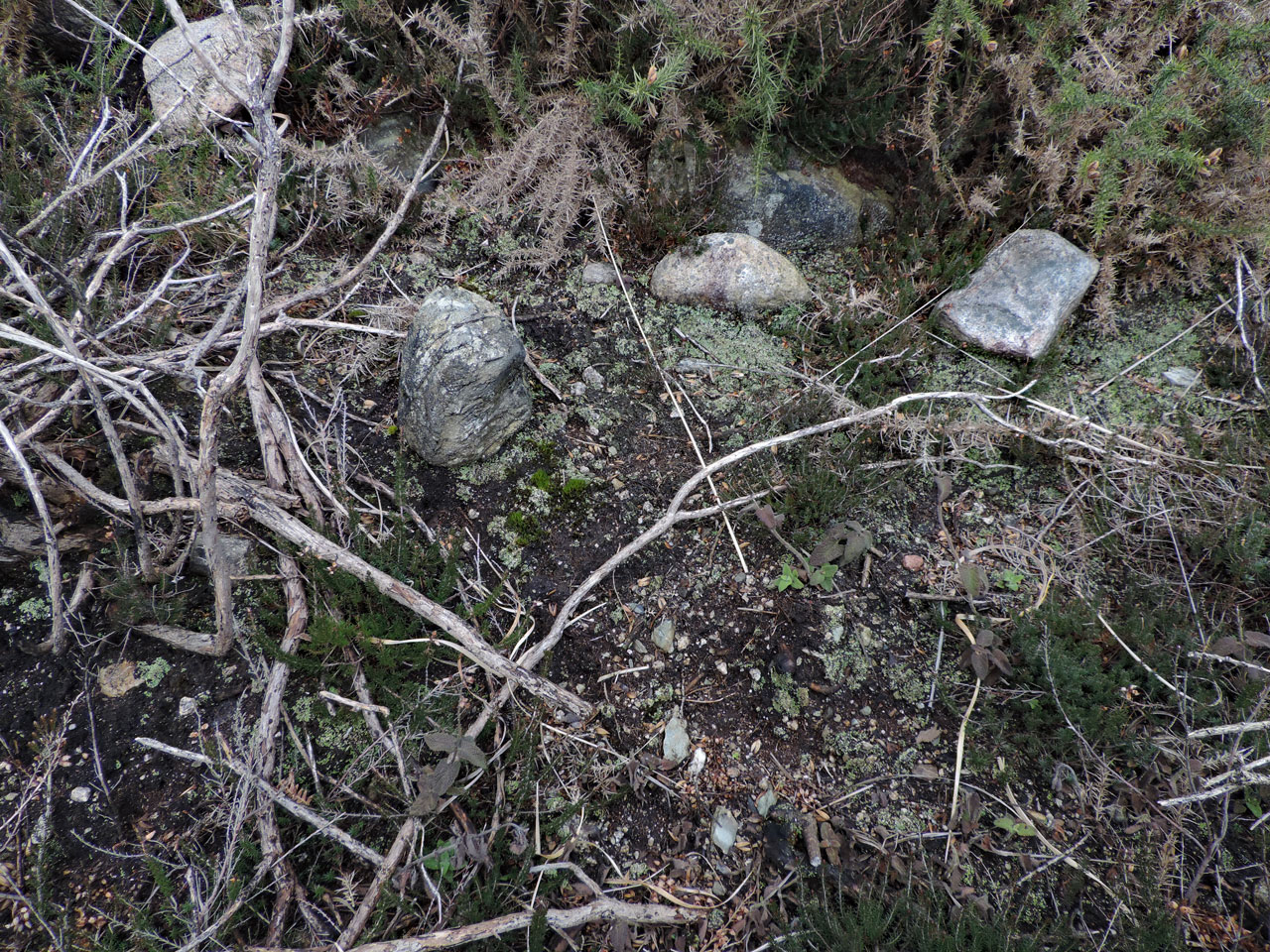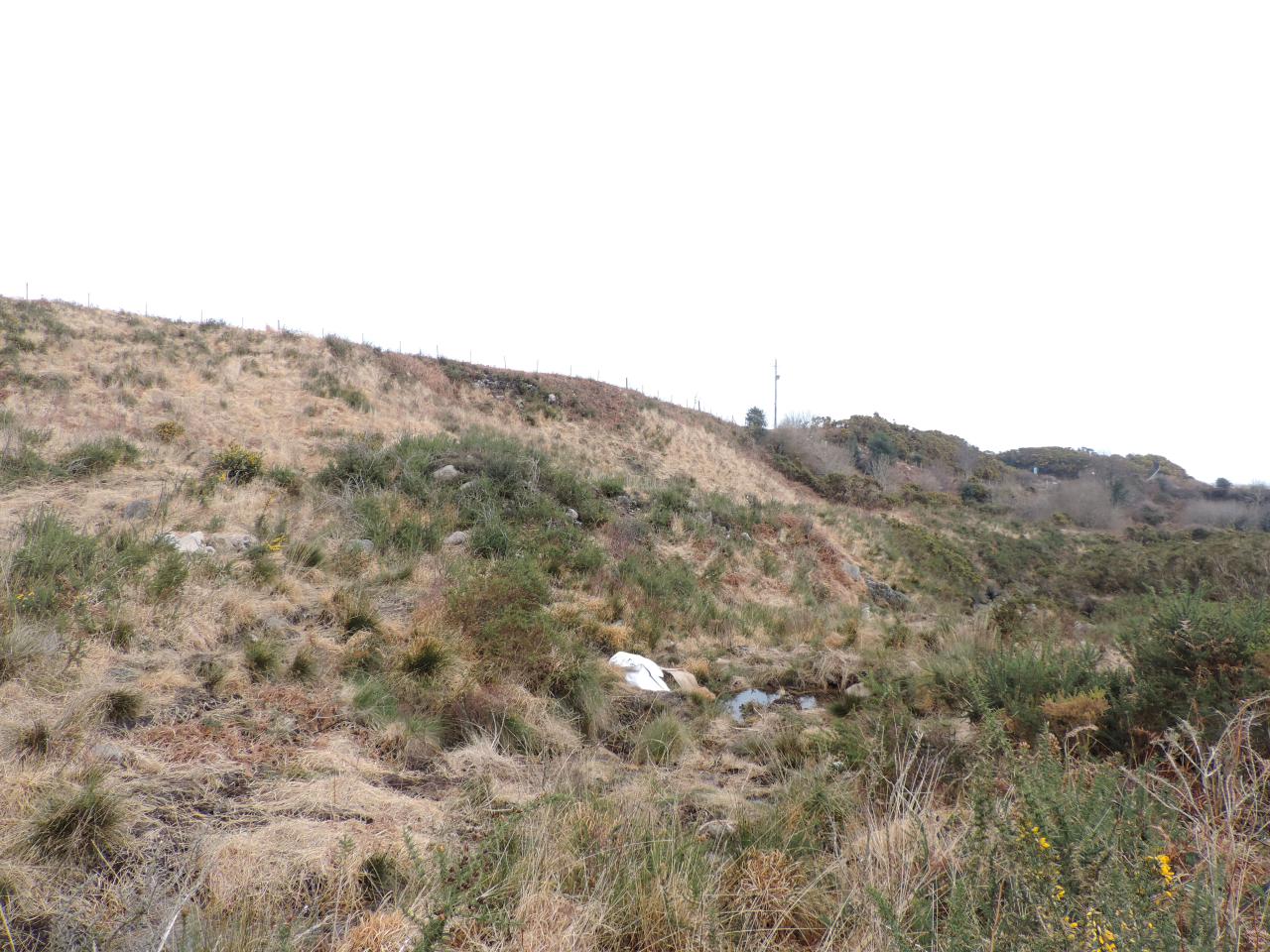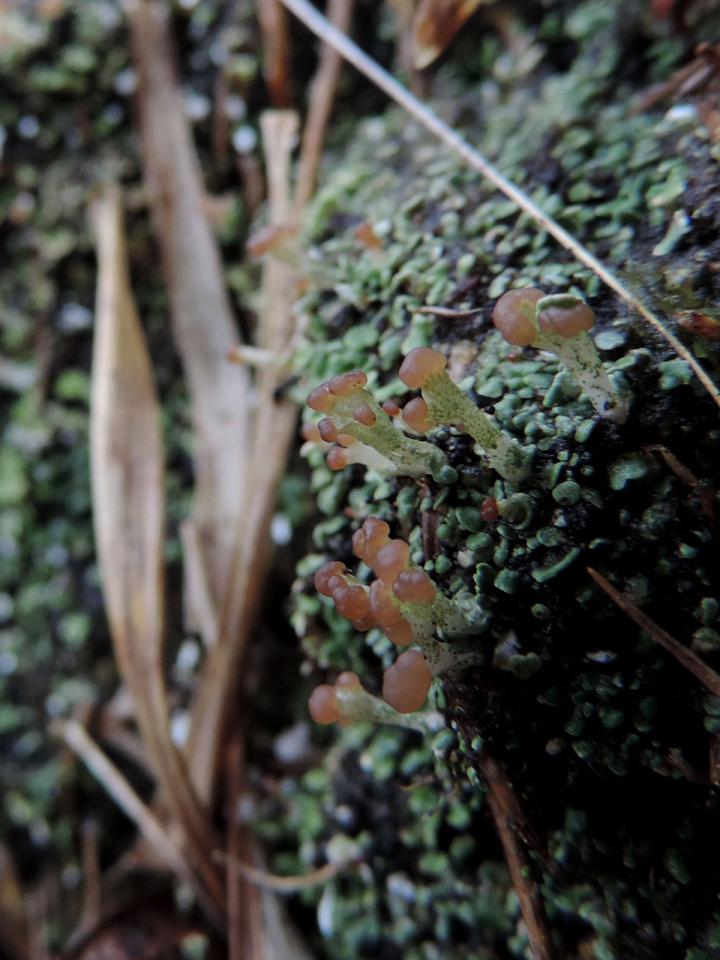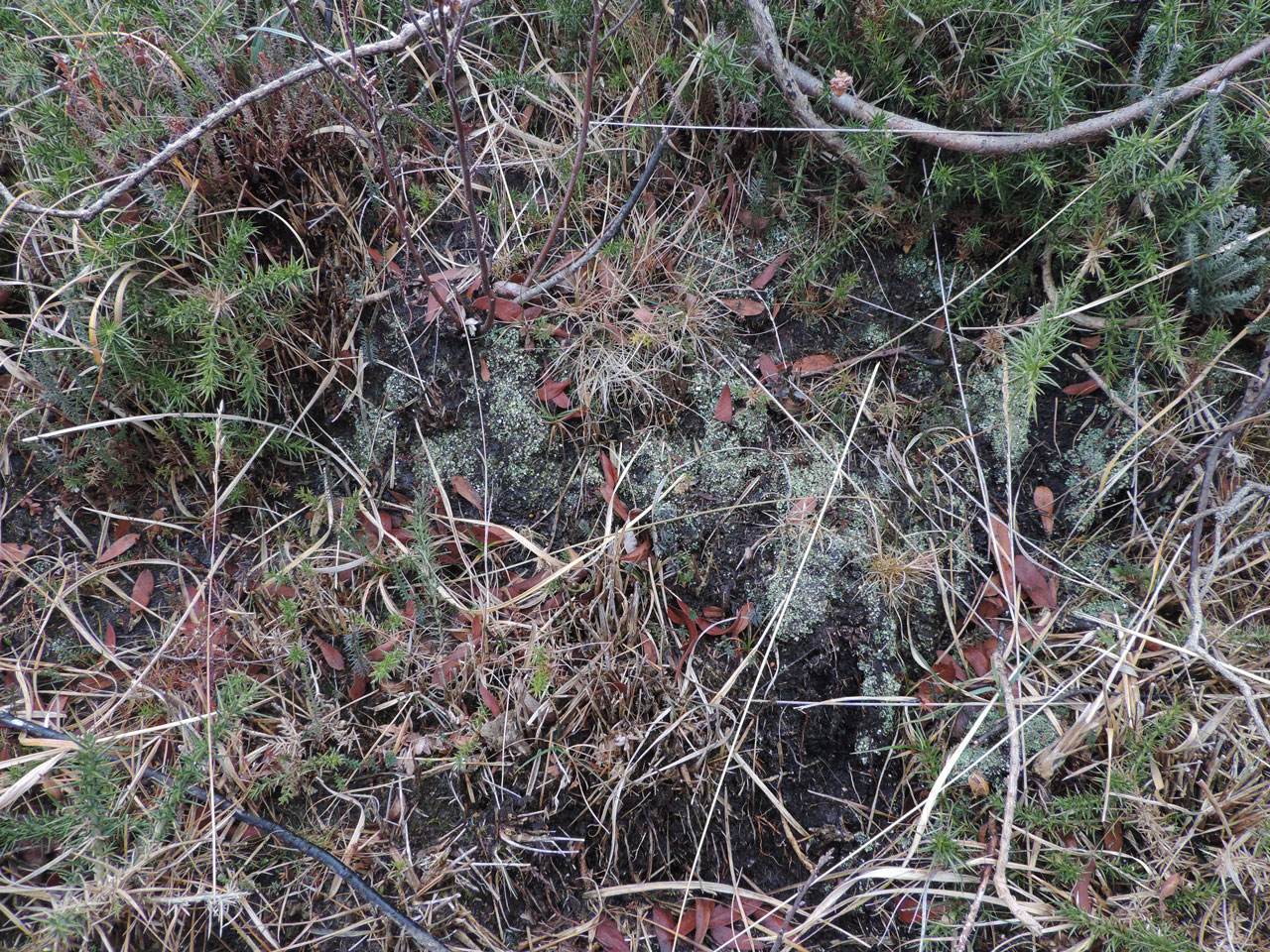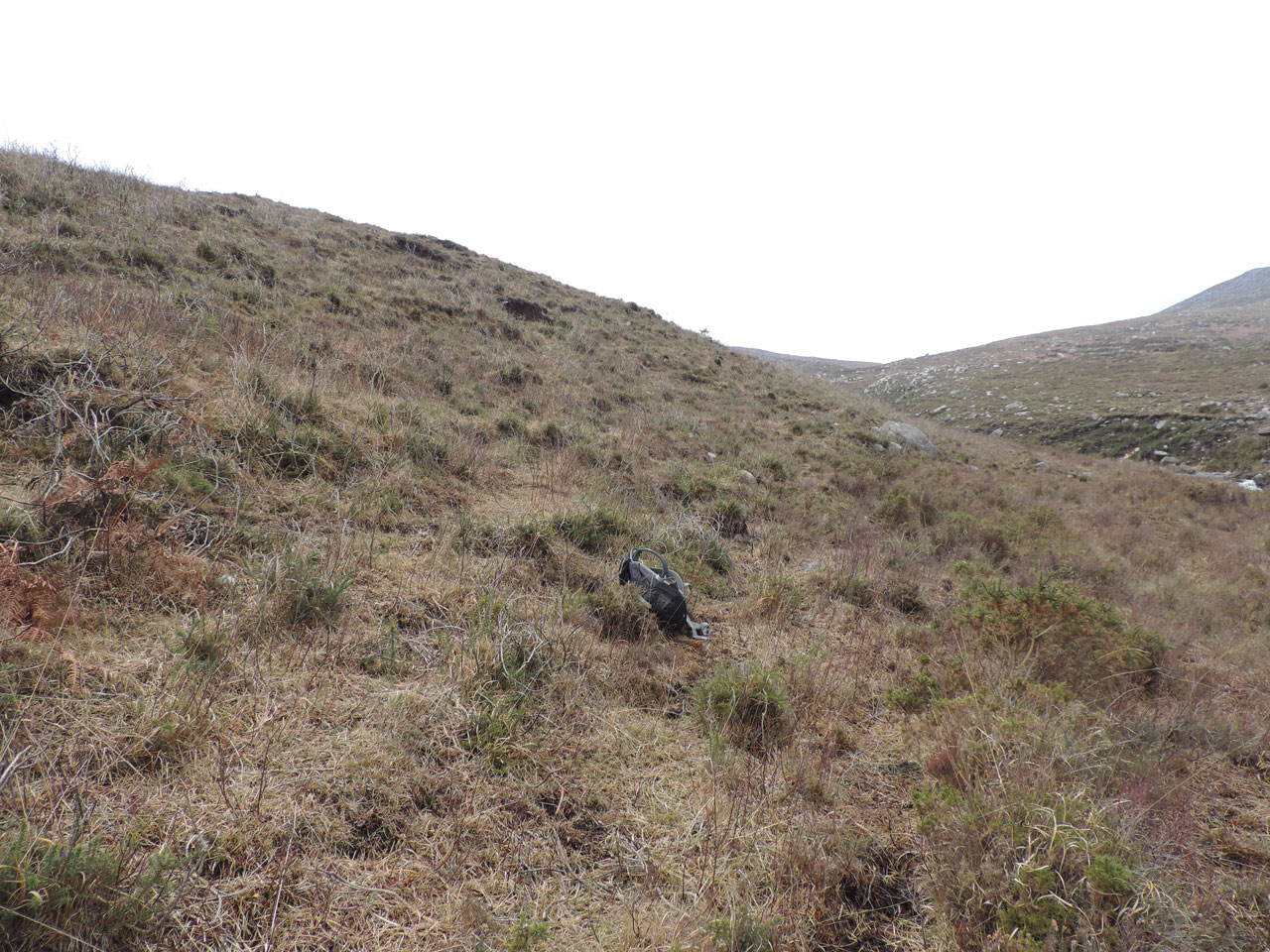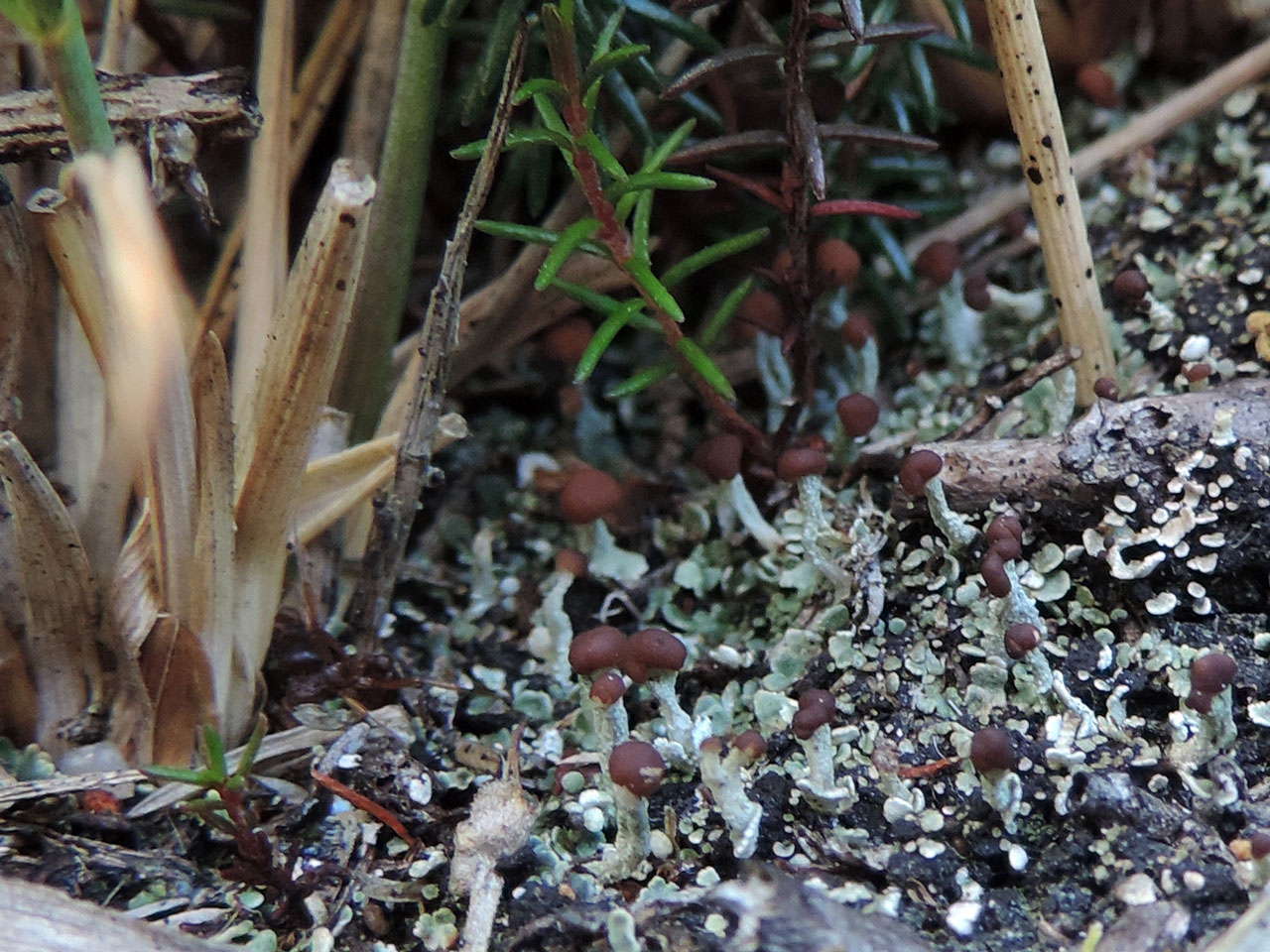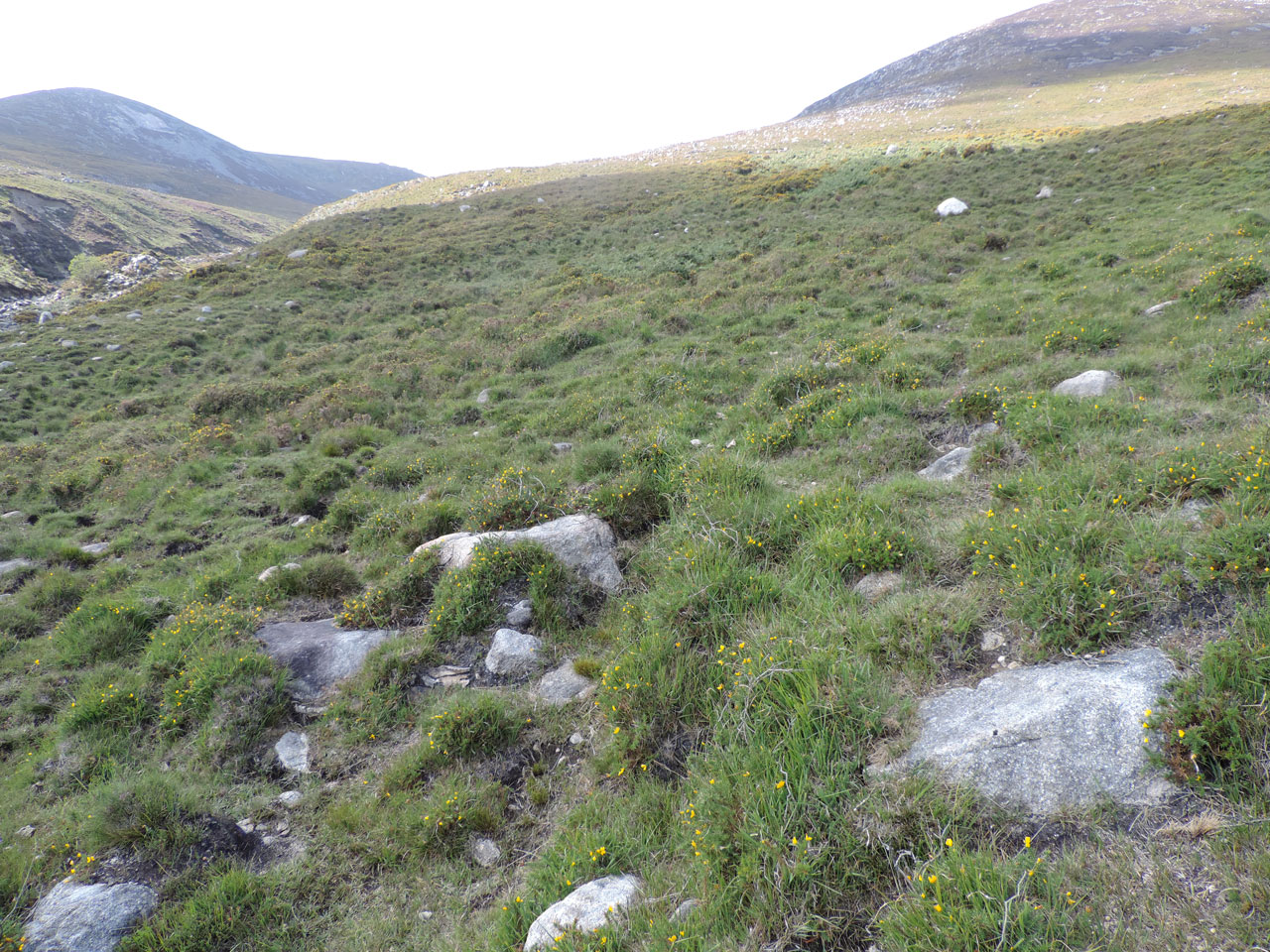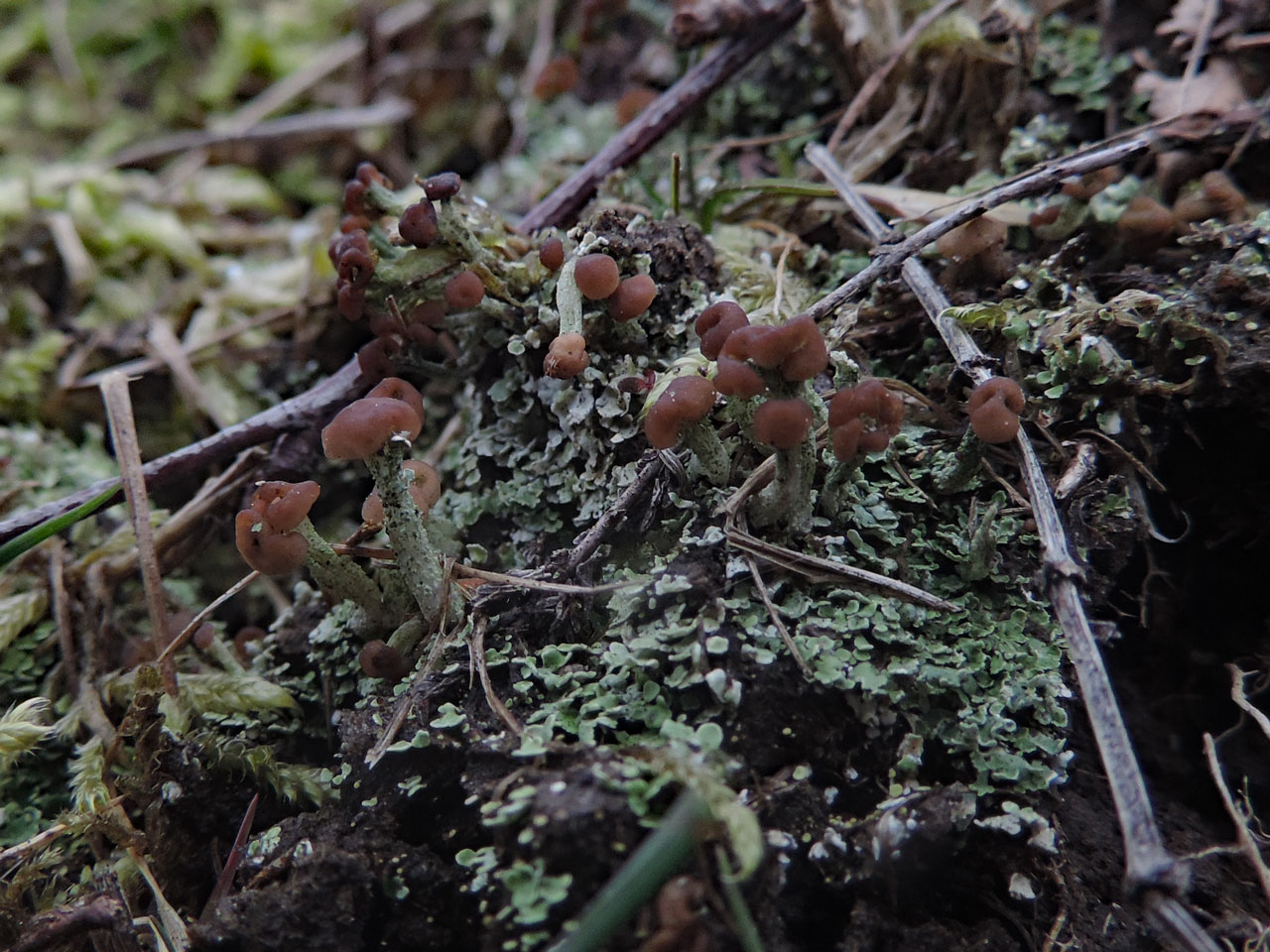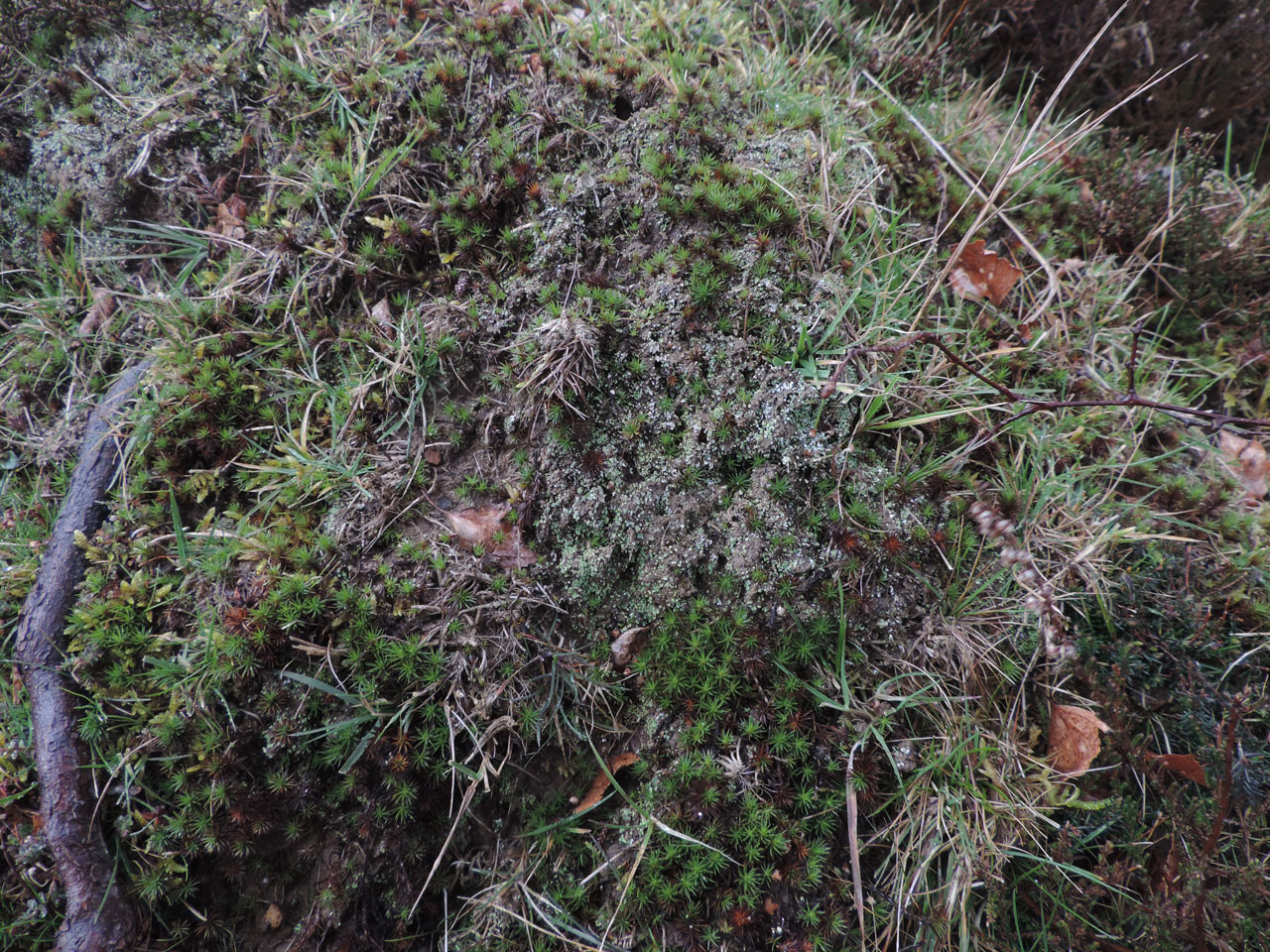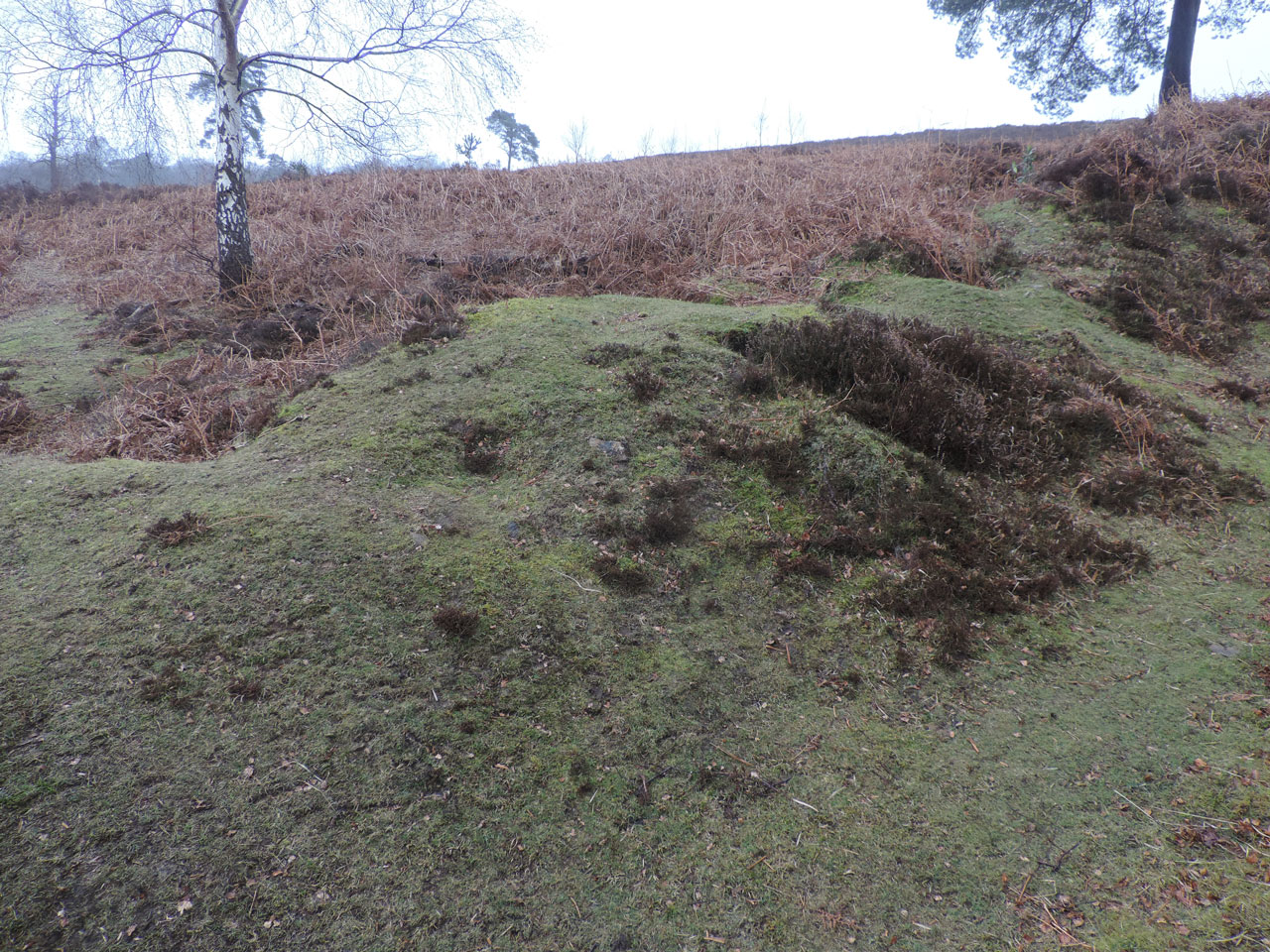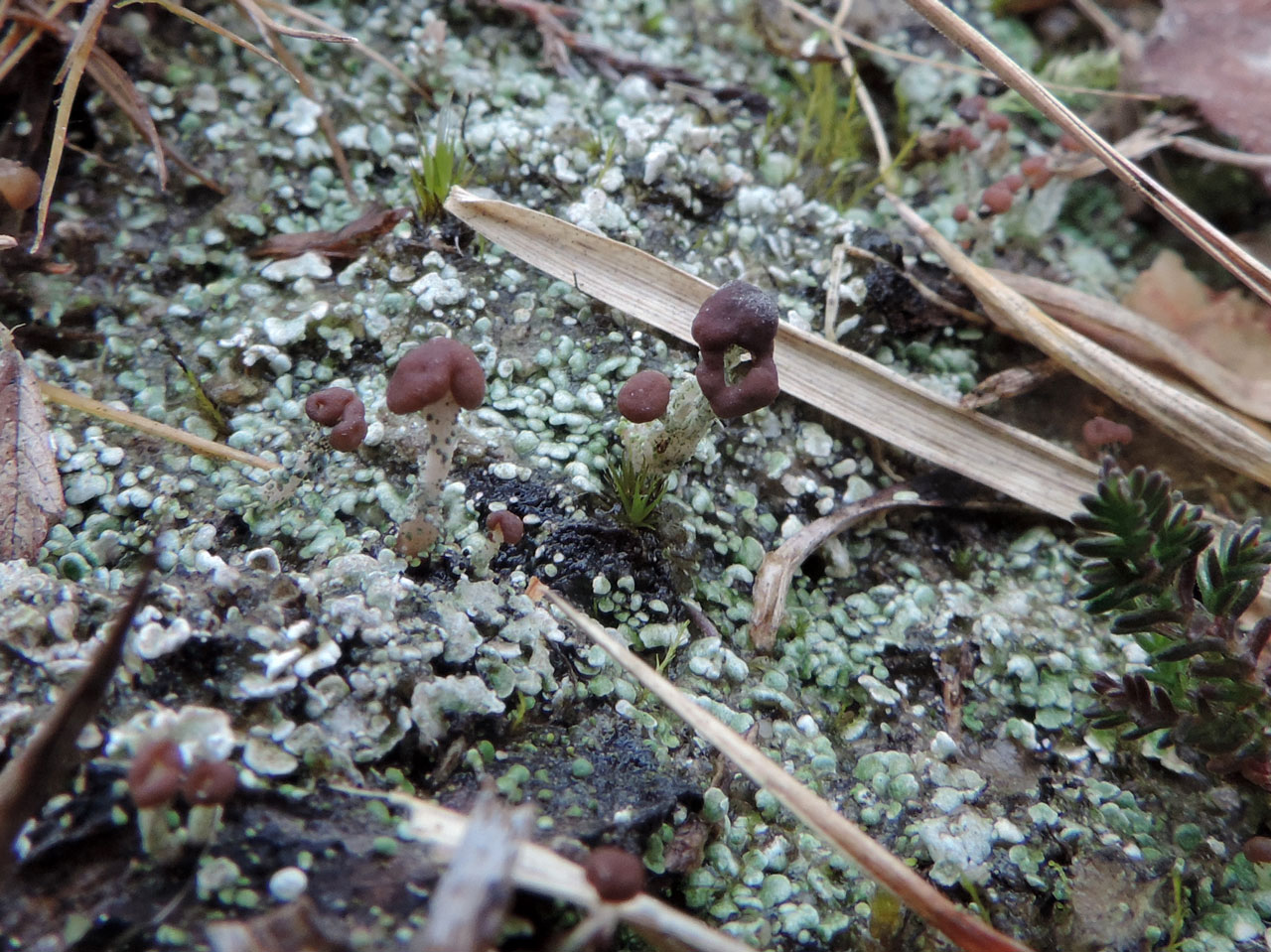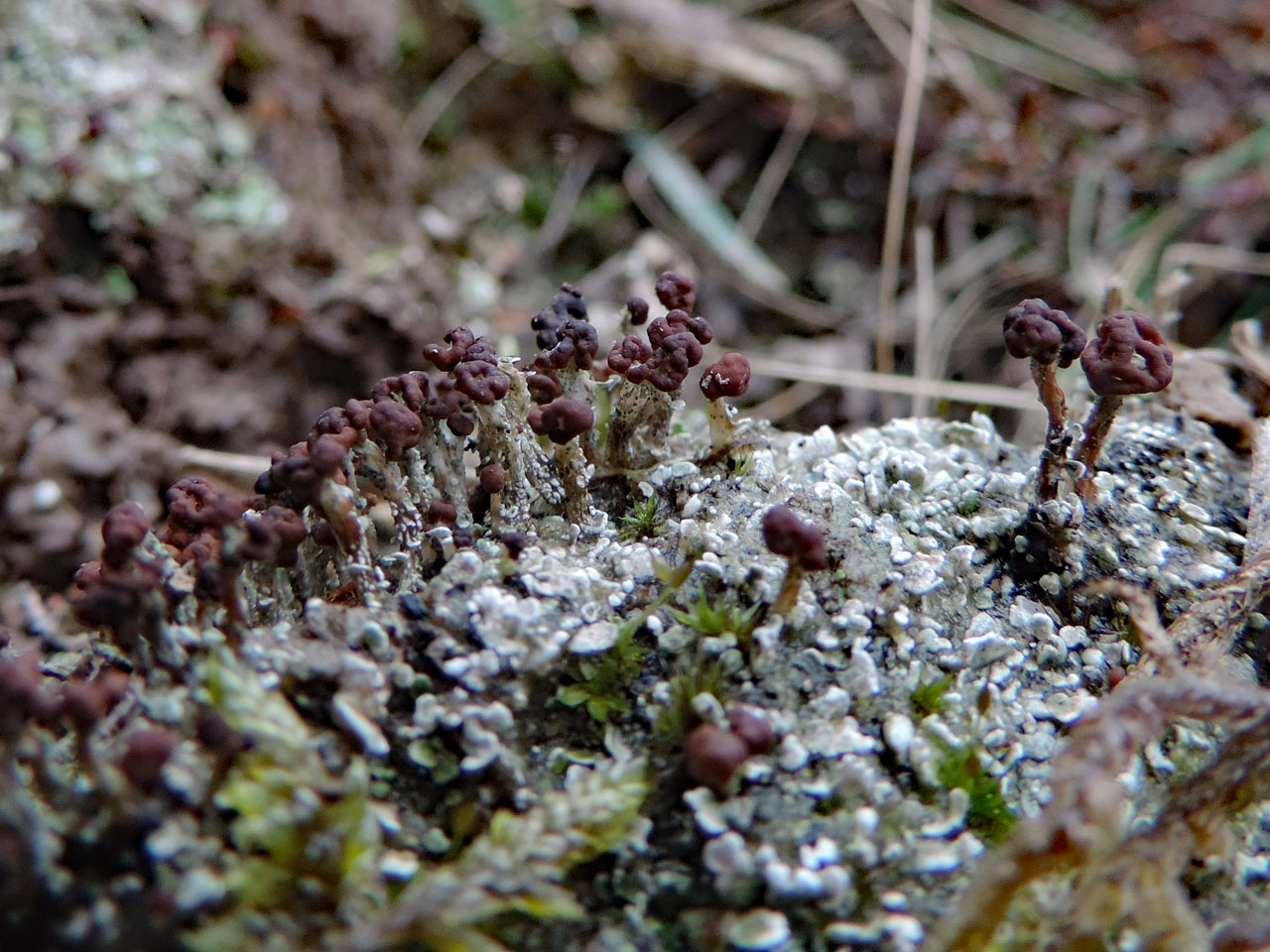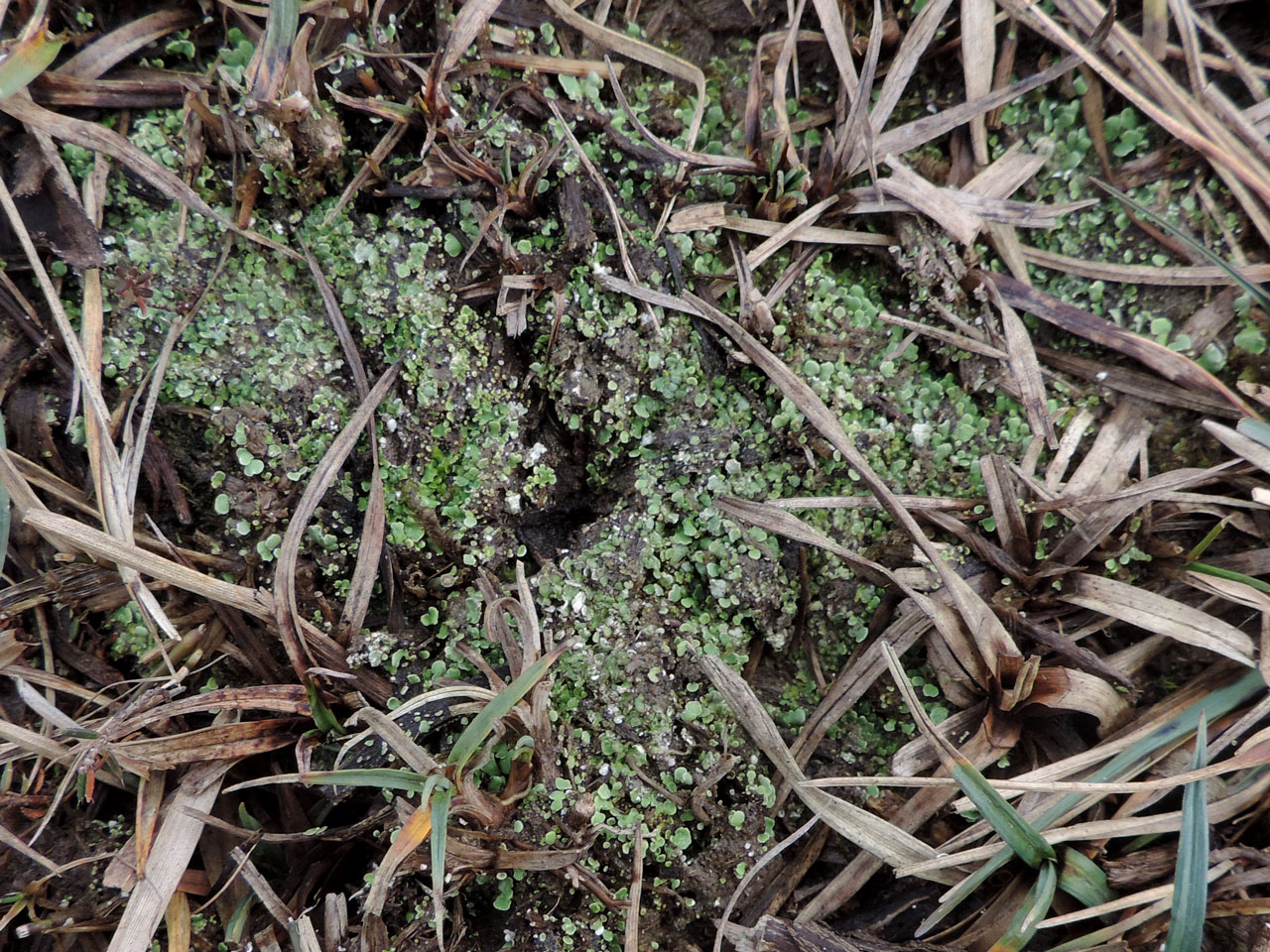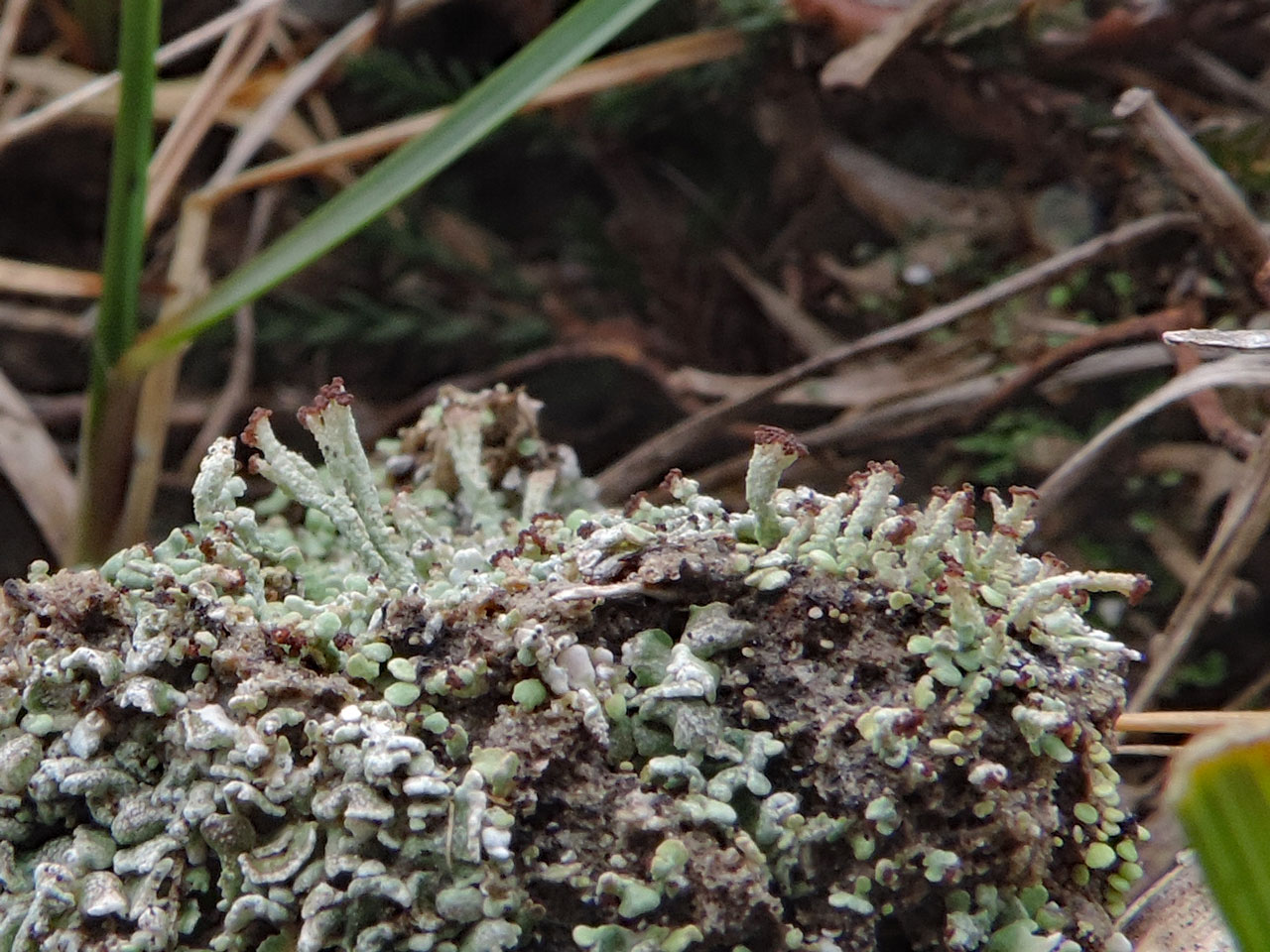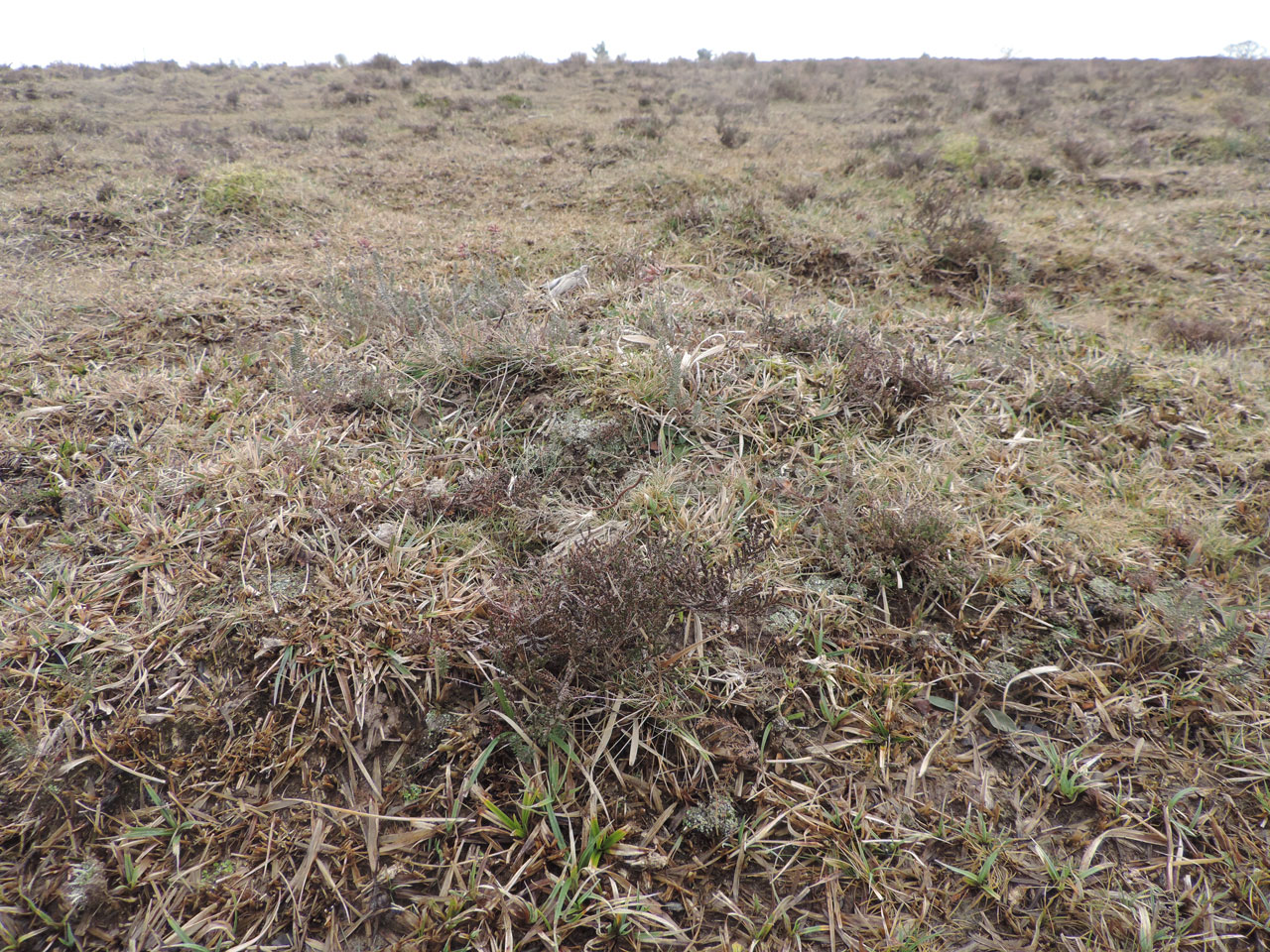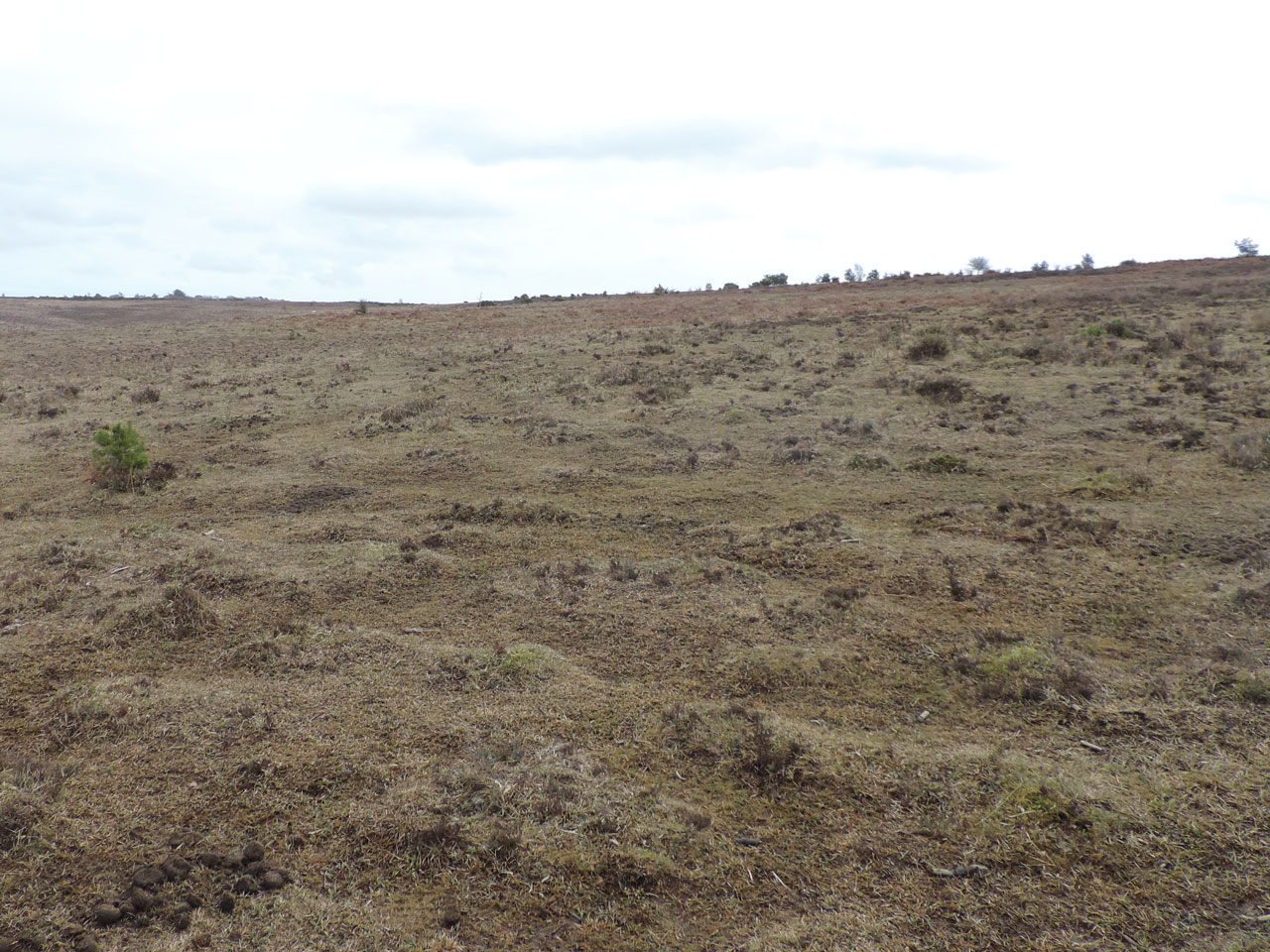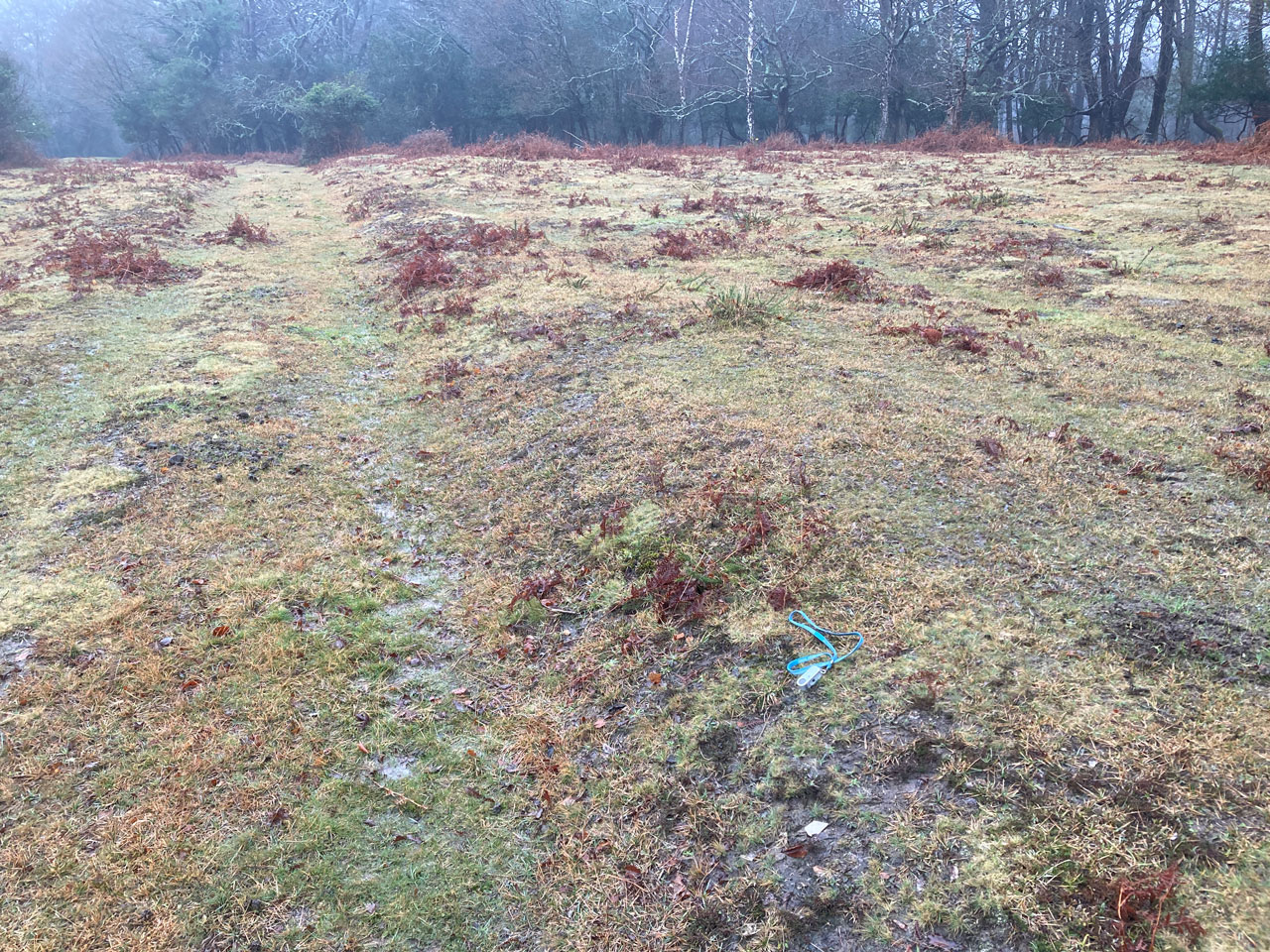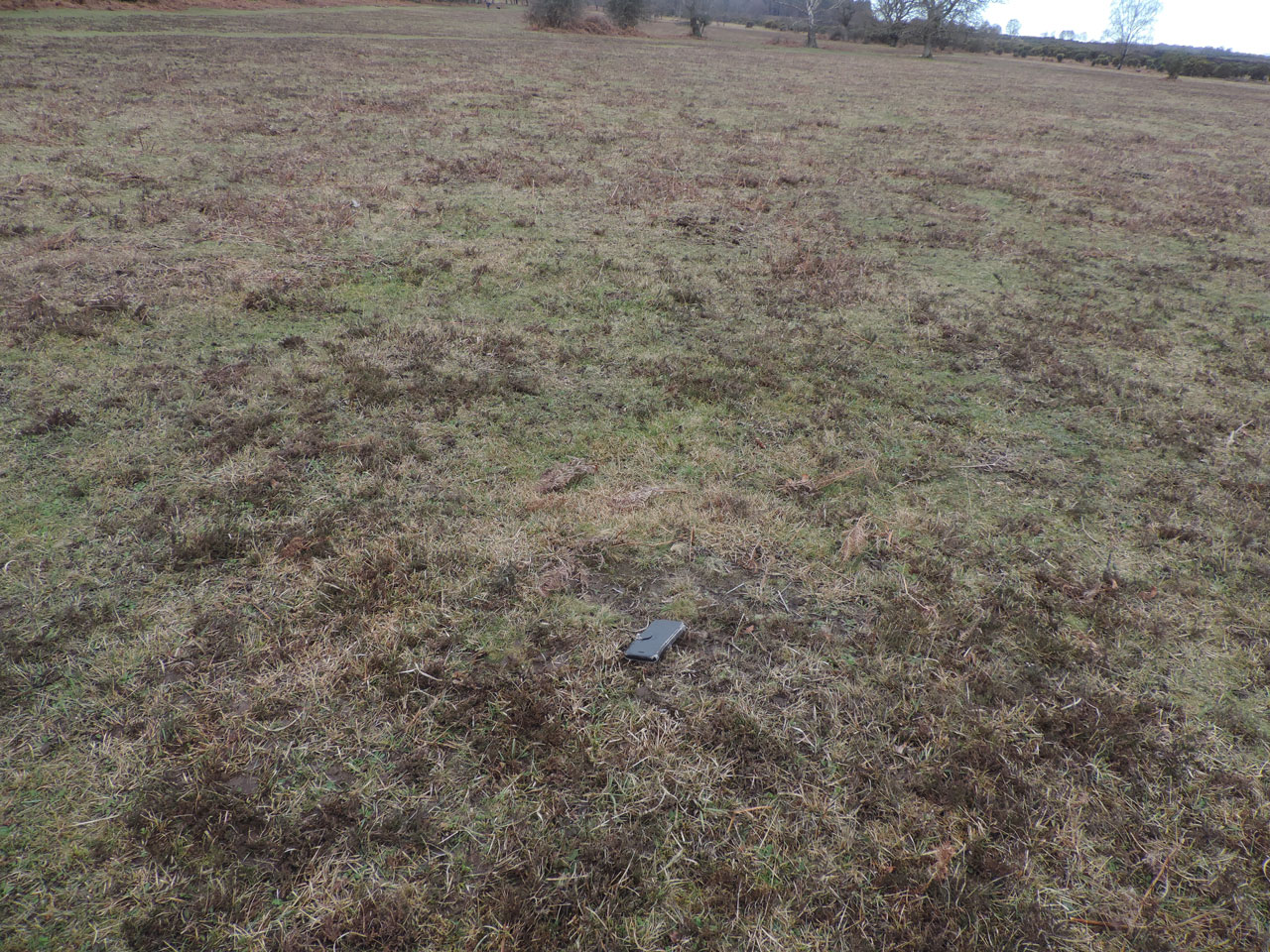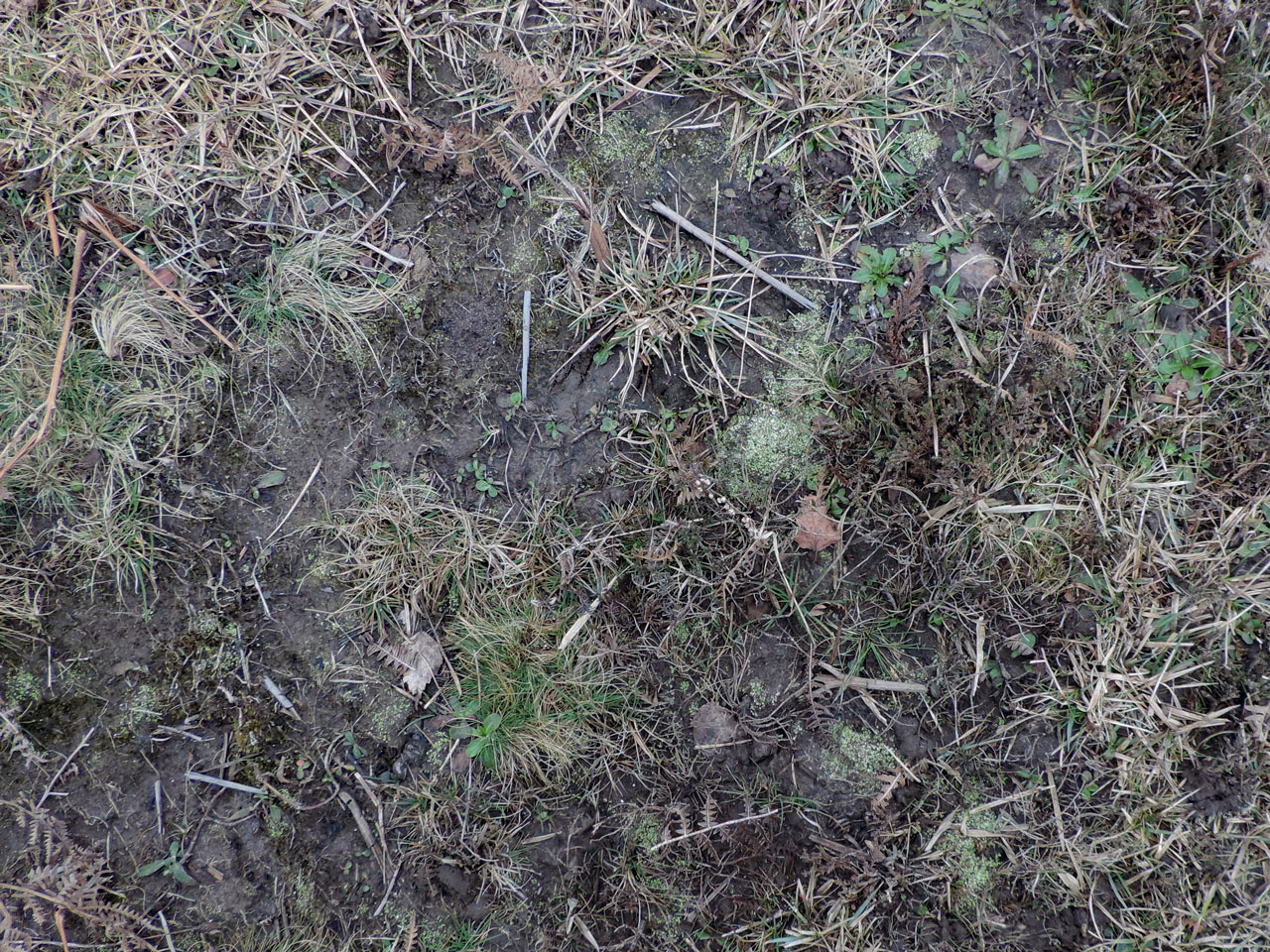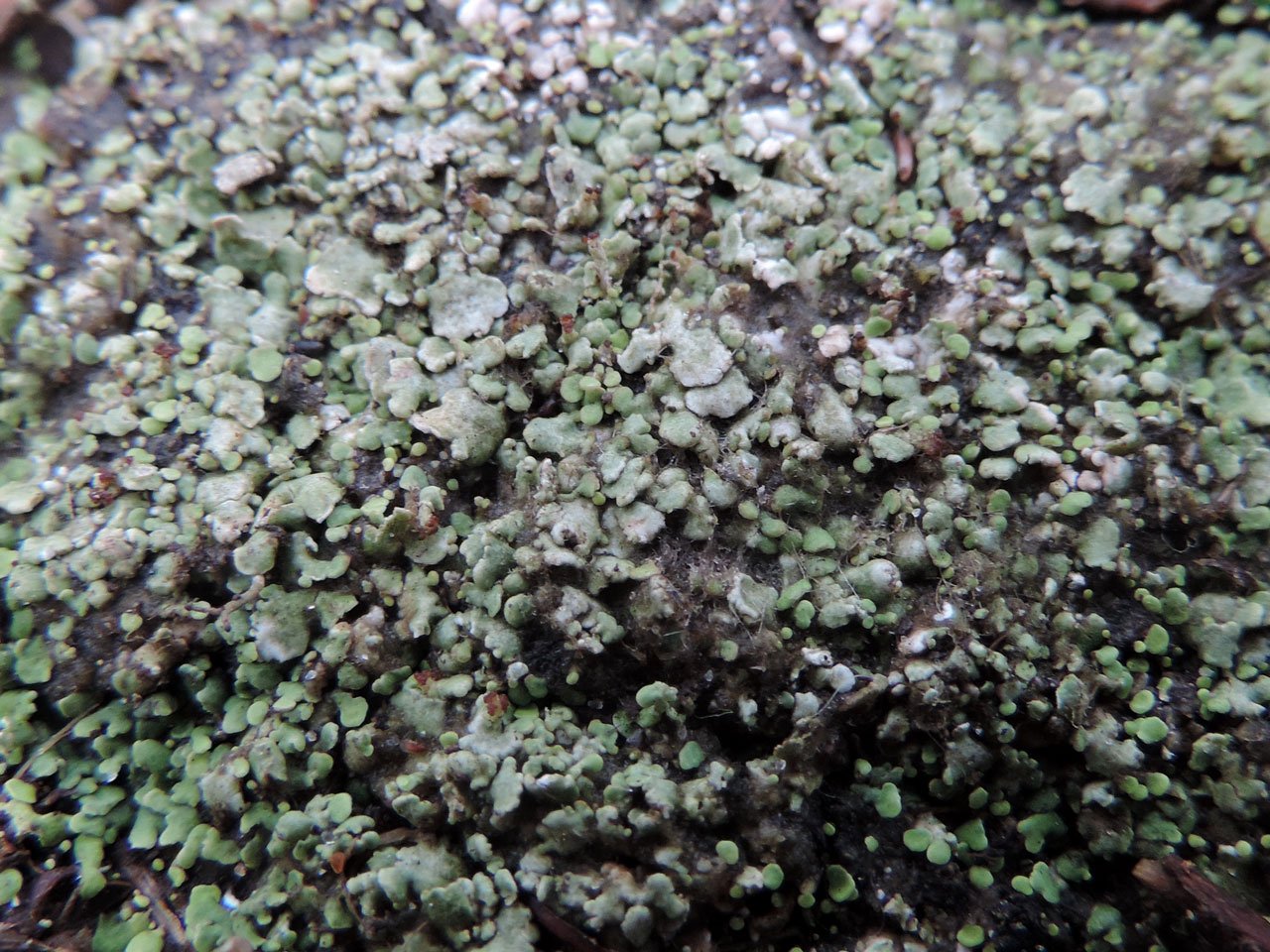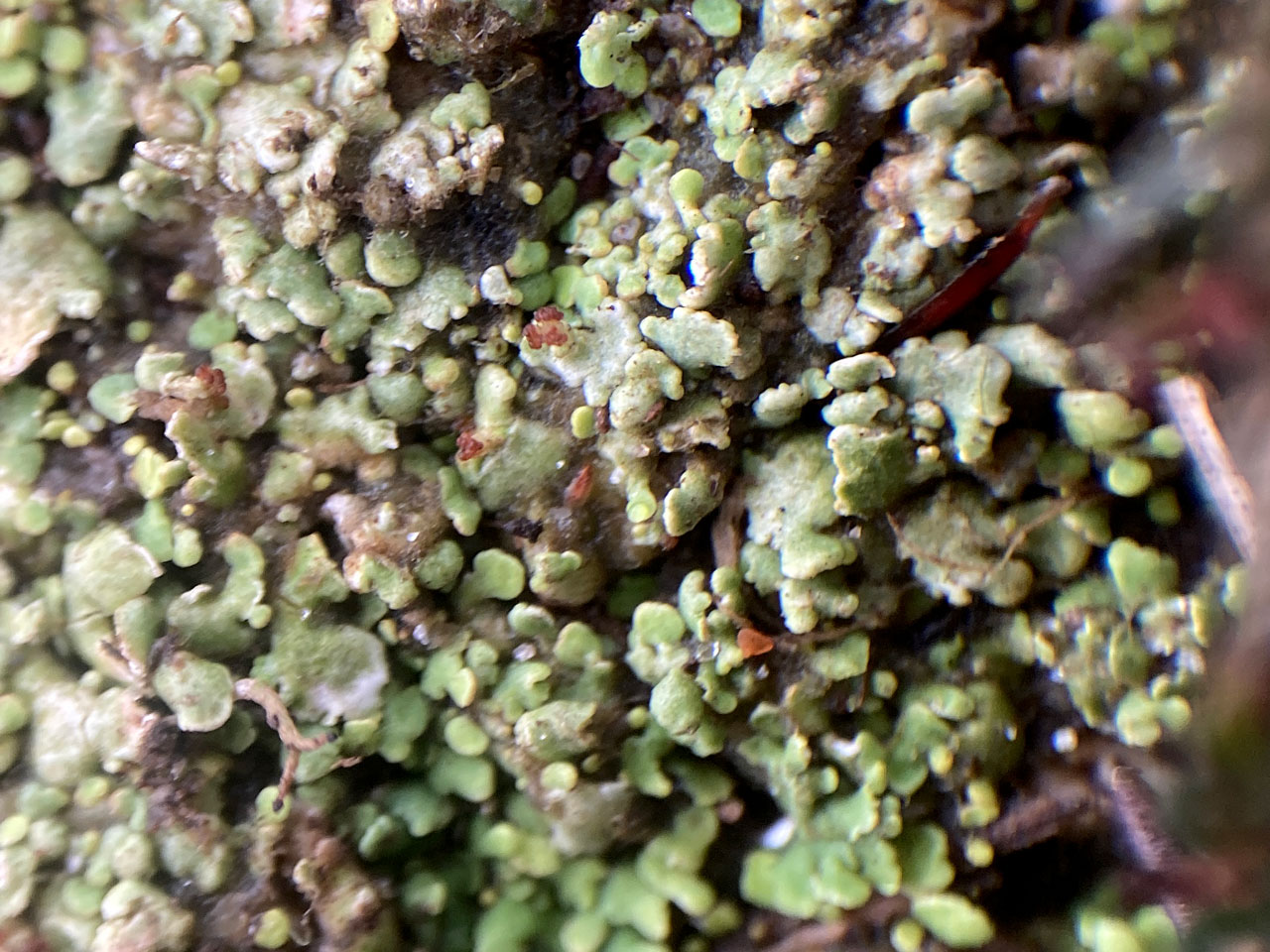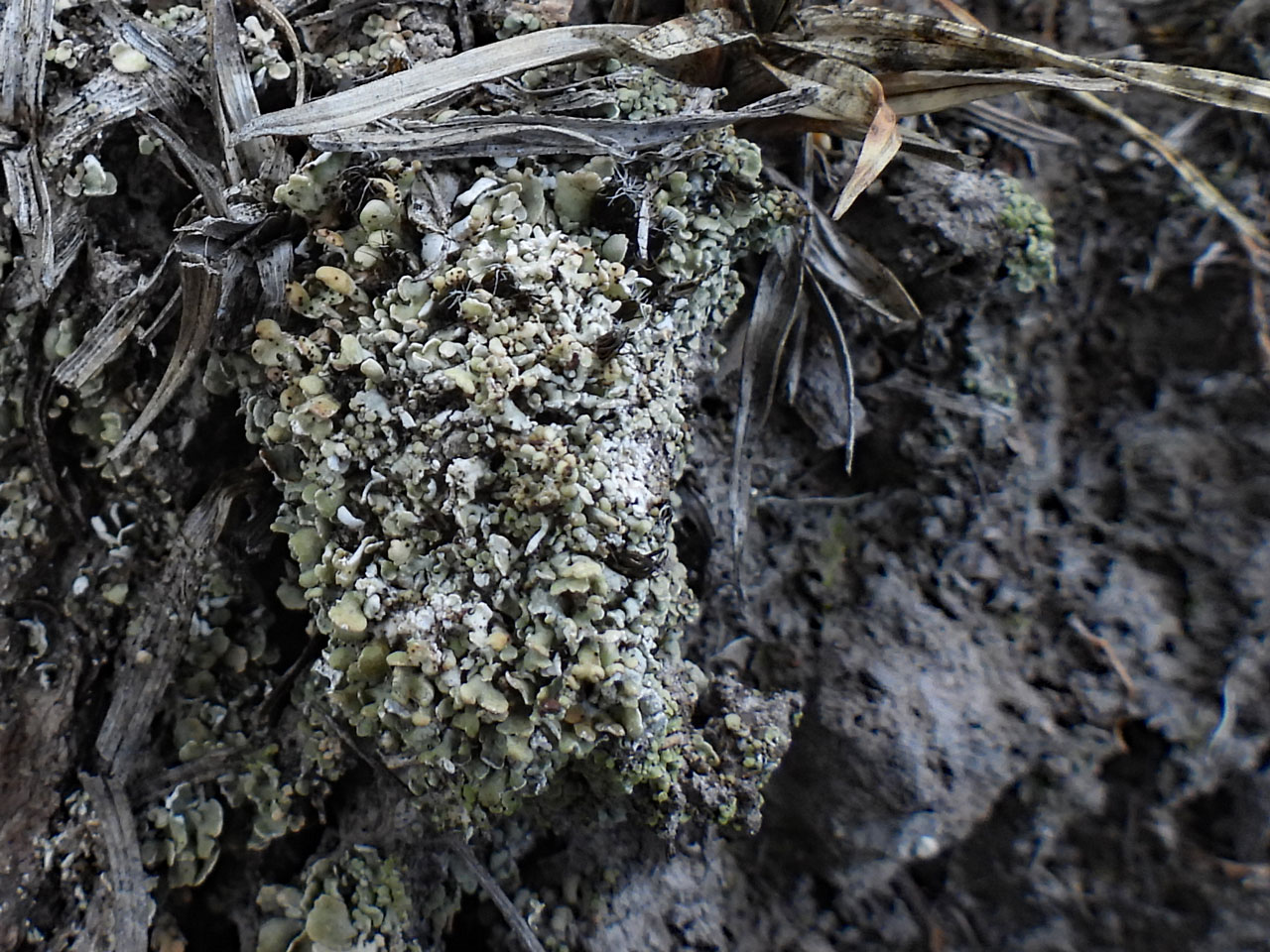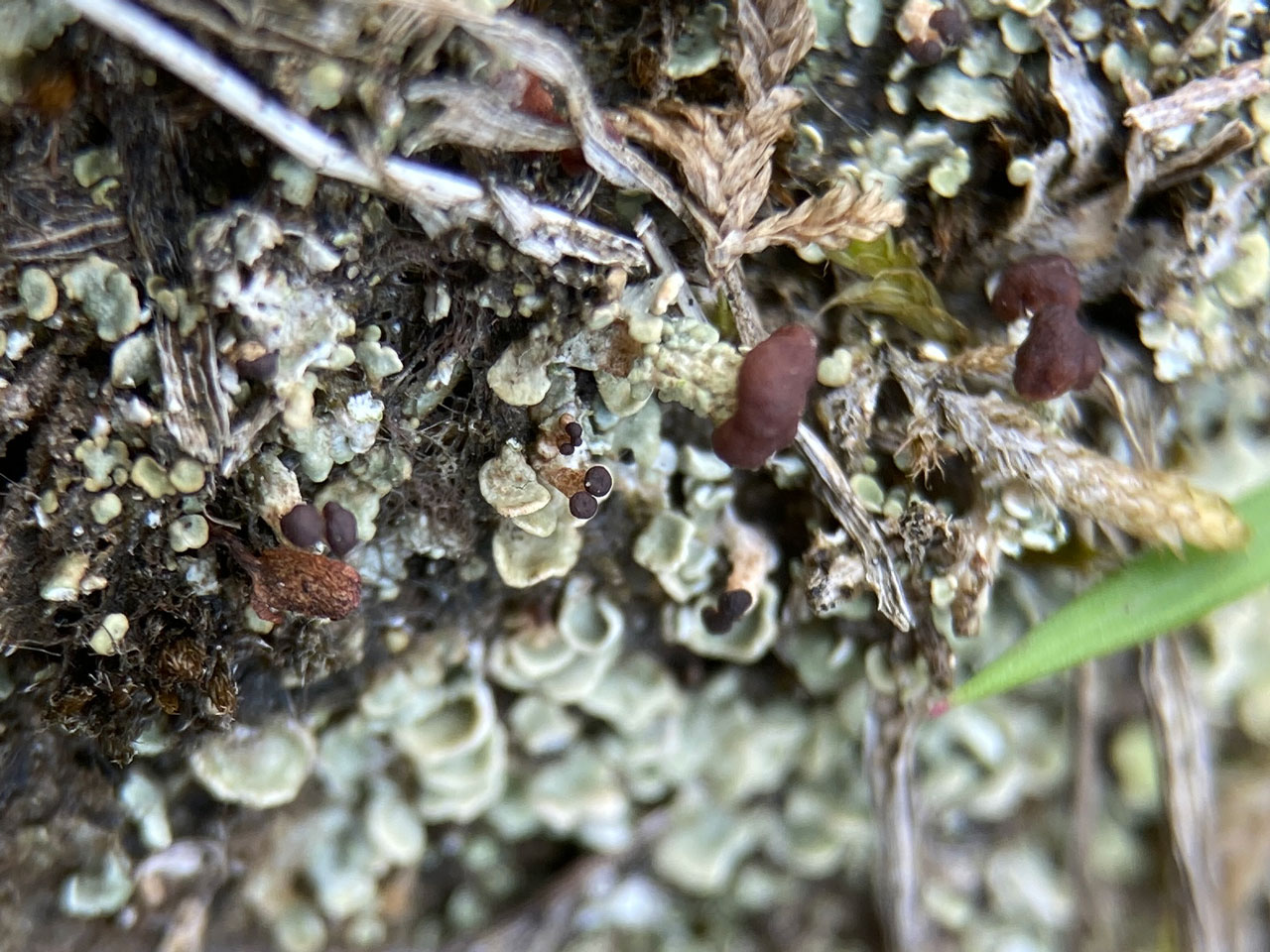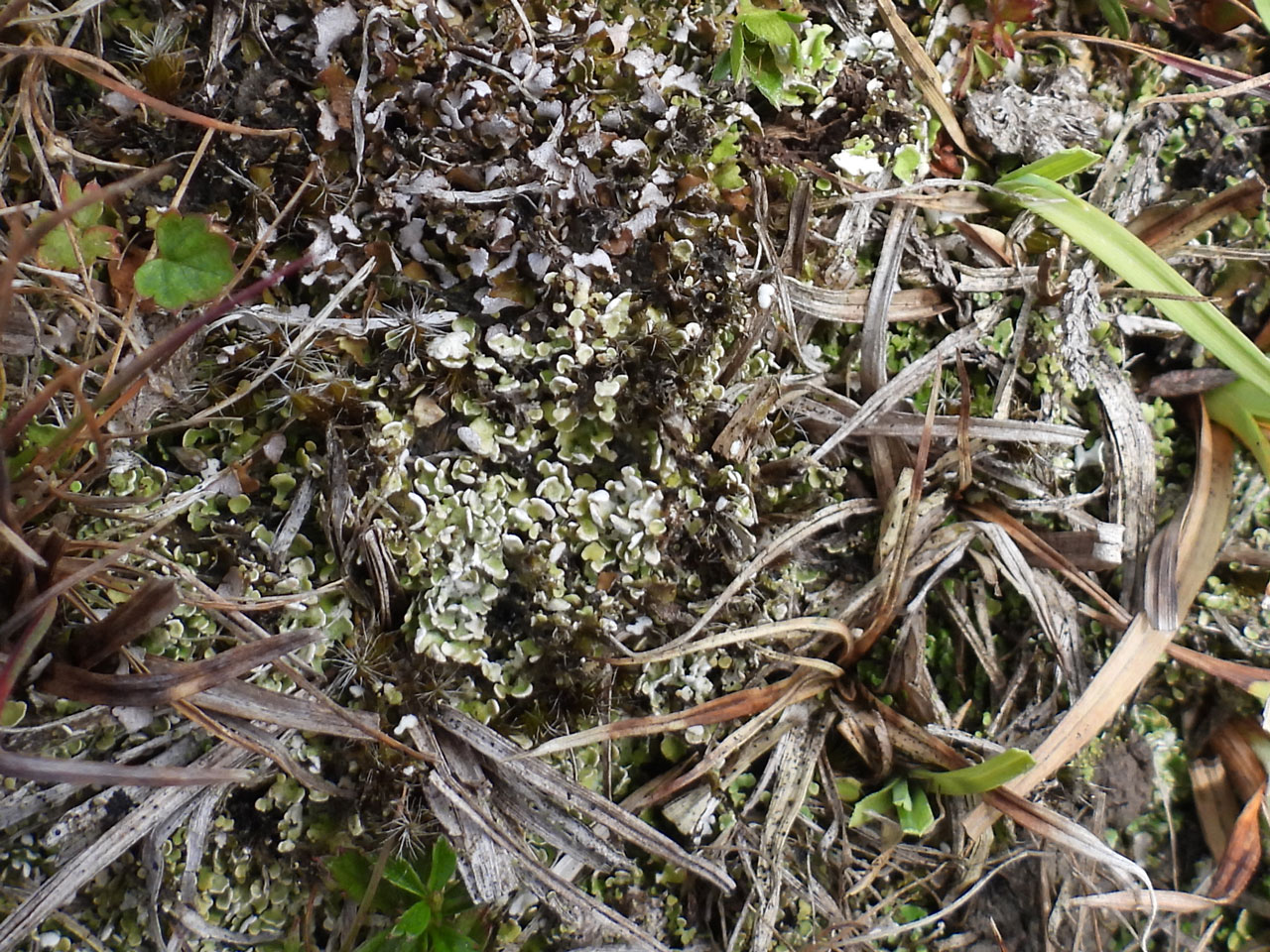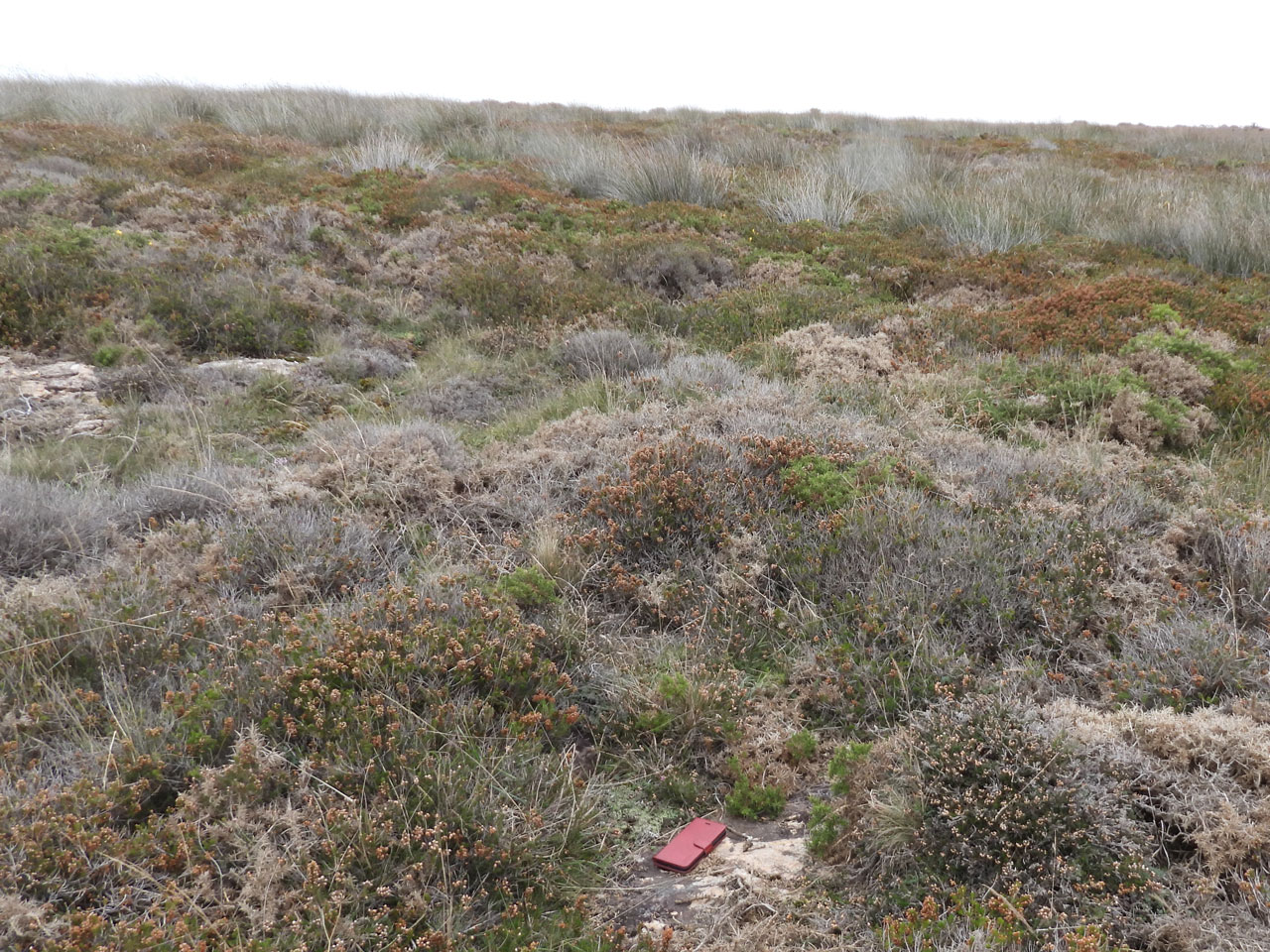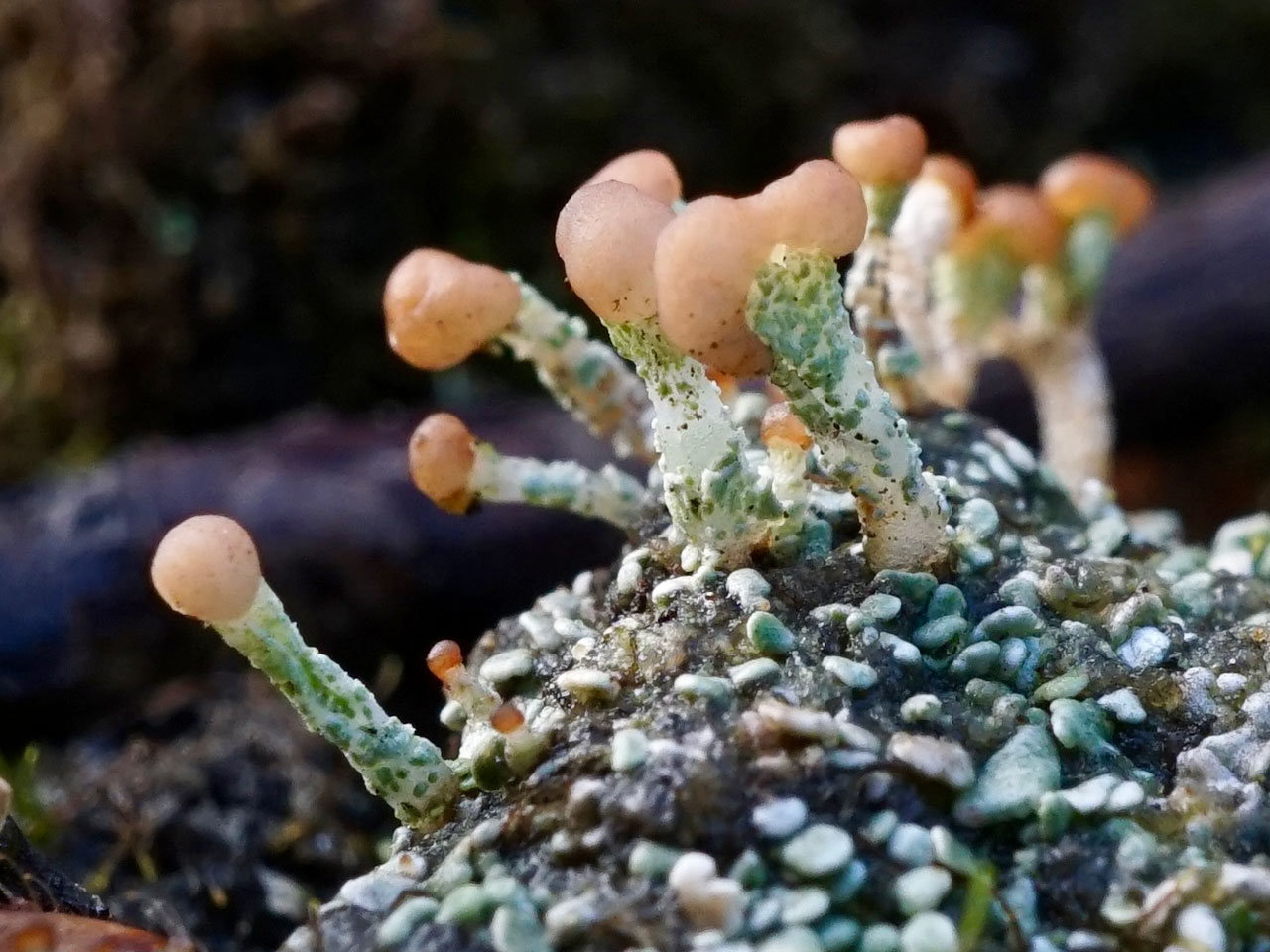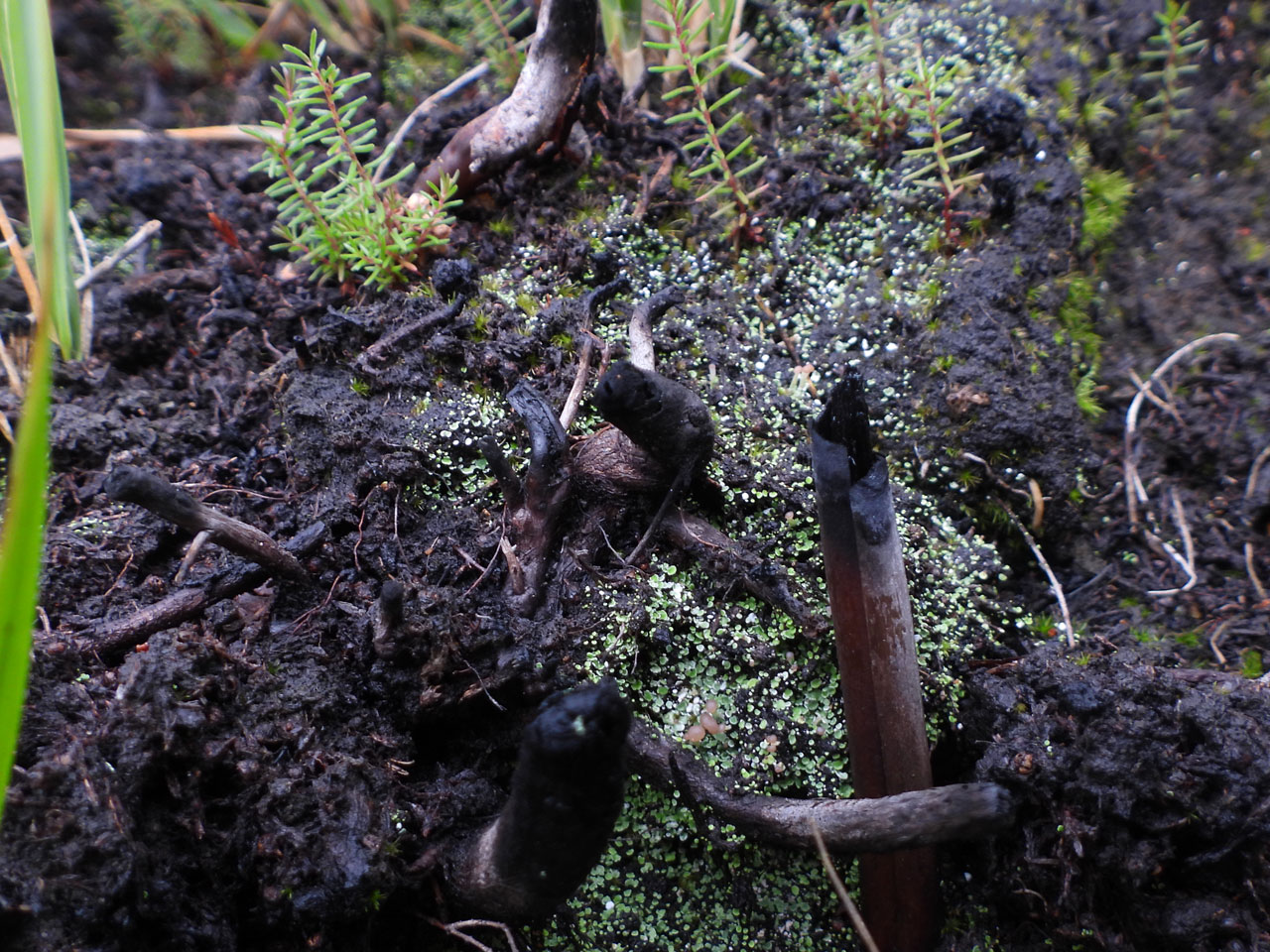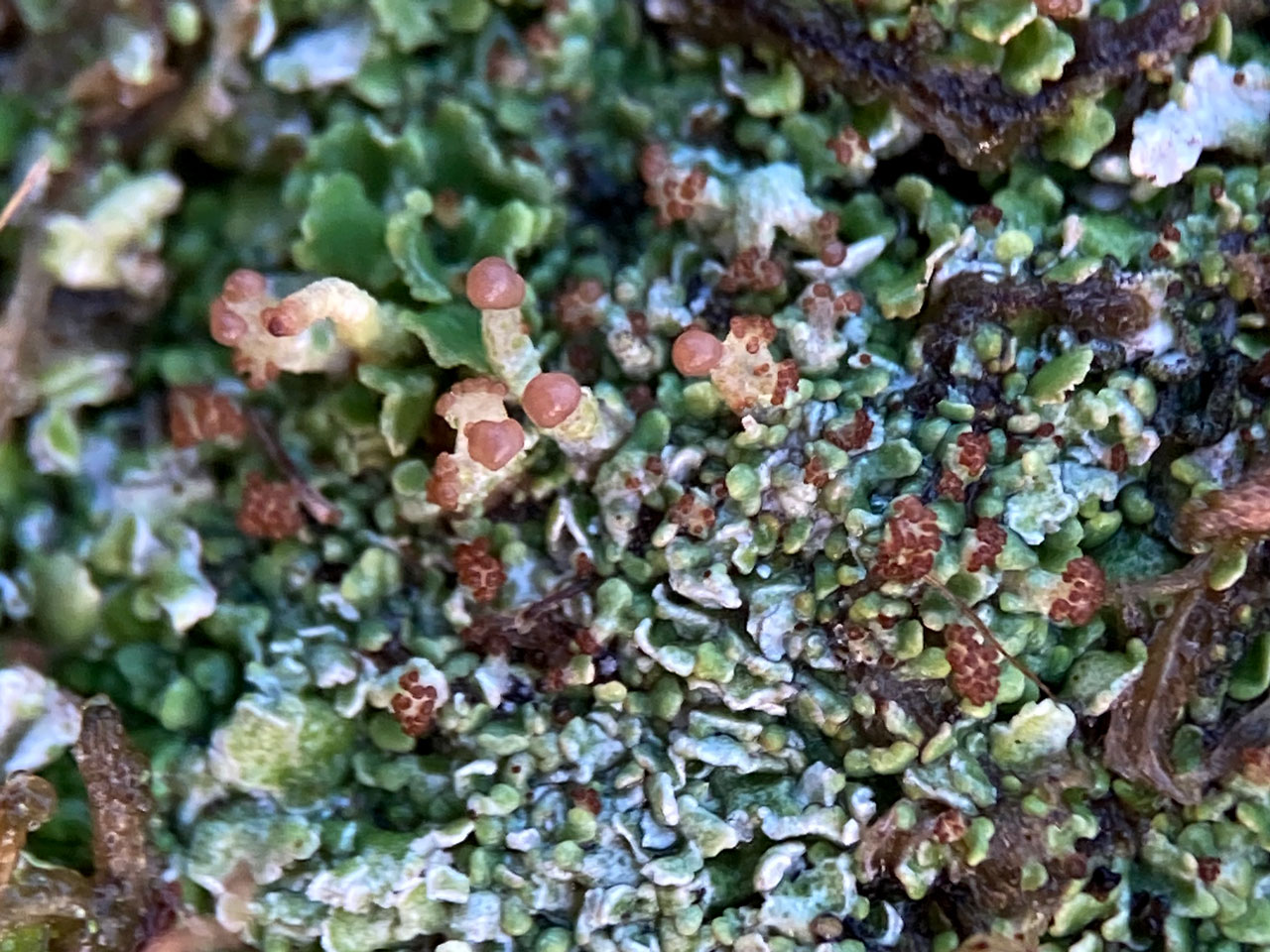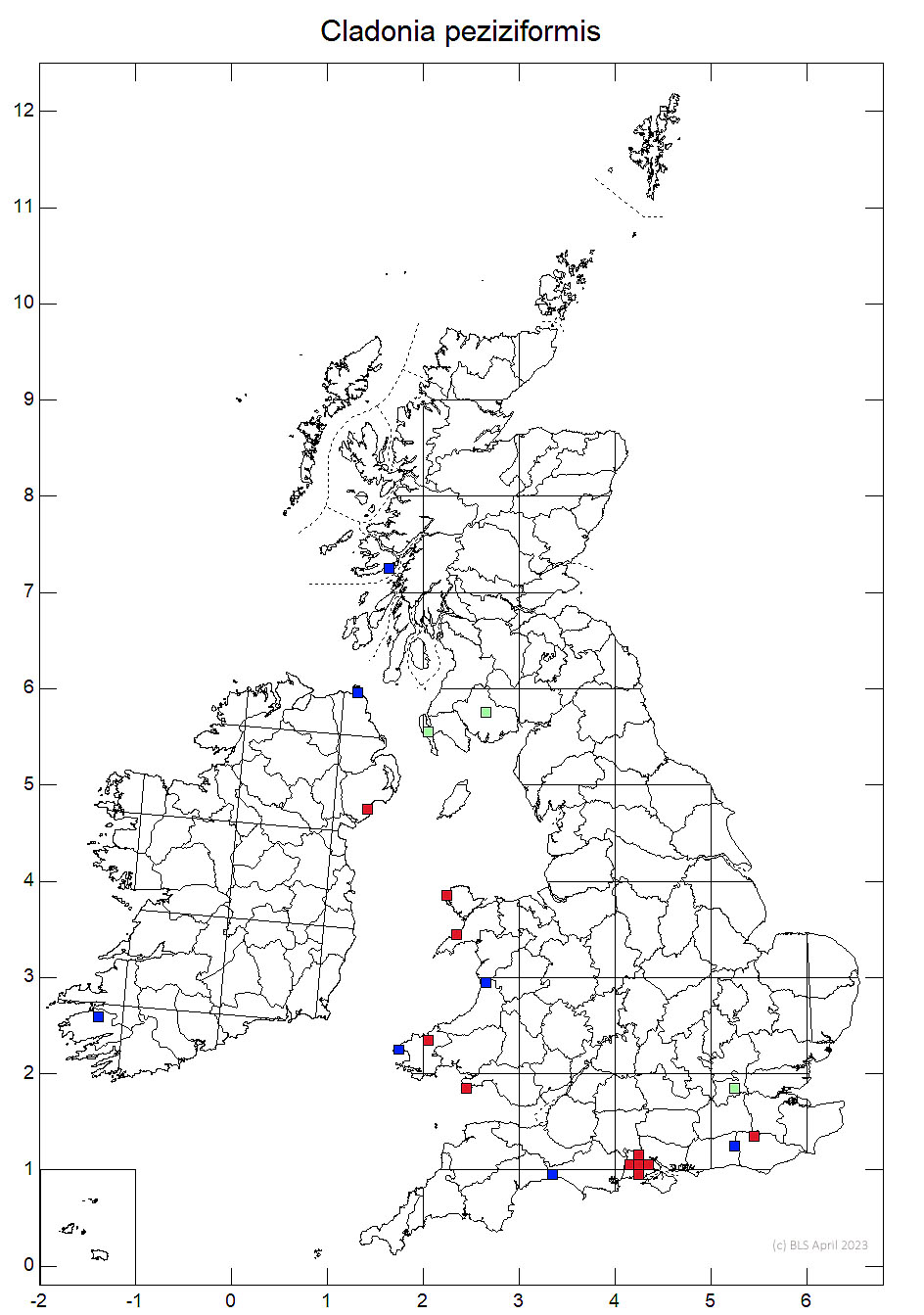Cladonia peziziformis
Cladonia leptophylla
A small but delightful little Cladonia, very rare but obvious when found fertile. The combination of a single terminal brown apothecia exceeding the width of the partly decorticate, sometimes fissured podetia, growing from rounded or ear-shaped basal squamules which are grey-green, often with a blueish tinge when damp, are highly characteristic. Its rarity is a bit mysterious and its few habitats rather disparate. Uniting factors include slightly less acidic soils and short well-lit vegetation. At several sites it is a short-lived pioneer coloniser following localised burning, but there are also more permanent populations in heavily grazed, and sometimes also burned, heaths where the vegetation is kept short.
Podetia to 1 cm tall, grey-green, usually unbranched, ± granular-corticate with partly decorticate areas, occasionally fissured and bearing a few squamules; cups and soredia absent. Basal squamules grey-green often with a blueish tinge when damp, and a beaten old bronze look when dry, small and granule-like or becoming ± rounded or ear-shaped, rather thick, with dark brown-black pycnidia on the upper surface, scattered when mostly horizontal, or forming a ± continuous crust and then ± erect. Apothecia frequent, dark brown, produced mostly singly at the apex and characteristically exceeding the width of the stalk-like podetia, mostly unbranched, but secondary apothecia on short lateral branches are sometimes produced which may fuse with the main apothecium. Pycnidia mainly reported from the upper surface of the squamules, but New Forest material as well as single stalkless pycnidia on the squamules, also has clustered pycnidia on short stalks on the ends of small podetia, which originate from the upper surface of the squamules. Thallus C–, K–, KC–, Pd+ red, UV– (fumarprotocetraric and ± ursolic acids).
Characterised by the short, sometimes slightly longitudinally fissured podetia bearing a single large terminal apothecium. C. cariosa is larger, usually has several, proportionately smaller, apothecia in a ± corymbose arrangement on the always strongly longitudinally fissured podetia, contains atranorin (K+ yellow & K/UV (dry)+ bright neon yellow) and grows in much more base enriched habitats. Cladonia ramulosa can rarely have single apothecia at the podetia apex, but lacks rounded basal squamules and has more obviously peeling cortex on the podetia.
Sterile squamules mats can frequent at sites confirmed by the presence of fertile podetia, and are distinctive, with rounded ear like oppressed and thick squamules with a distinct bluish tinge when damp and grey-green with faintly bronzed mottling when dry. The undersides are white and smooth. Confirming the identity of fully sterile colonies, however, could be problematic, but the short stalked clustered pycnidia on short podetia, are a useful feature are nearly always present and appear diagnostic.
On open patches of mildly enriched acid soils, mainly in coastal heaths but also inland in lowland heathland; requiring short well-lit vegetation, ranging through parched acid grassland (U1) Bristle Bent Acid grassland and heath (U3, H3c & H6c), open Calluna-dominated heath to mounds in short grazed New Forest Calluna – Sphagnum wet heath, Carex – Succisa sub-community (M16b) and Irish Schoenus nigricans – Molinia caerulea – Ulex gallii wet heath. In short heavily grazed heaths it forms long-lived populations, but in lightly grazed situations it is often a short-lived pioneer coloniser following localised burning. Known from very few sites and the exact reasons for its rarity are mysterious.
The apparent requirement for short open vegetation on quite productive soils, is likely to require habitats that are hard grazed, and often also controlled burned, to maintain openness. Burning alone appears ineffectual at maintaining sustainable populations.

Very rare, W. and S. Britain, W. and N.E. Ireland. An ephemeral at some sites, but with a few more long lived populations in stable vegetation known, probably including the substantial population discovered in short grazed acid grassland on pillow mounds (old artificial rabbit warrens) in heathland in Ashdown Forest in 2021. Other populations in stable vegetation are found in heathland in the Bloody Bridge area of the Mourne Mountains, Co Down, Ireland and in coastal heath on the Lleyn Peninsular in N. Wales. In 2022 a small additional population was discovered in the New Forest on a pillow mound in short grazed very open Bristle Bent (Agrostis curtisii) heath (H3c) along with a more substantial population on the tops of hummocks in herb rich wet heath (M16b). Further exploration is finding additional sites in the New Forest on hummocks in short grassy wet hearth and on acid grassland on the sides of hollow ways. A subsequent New Forest survey in 2023 found a very substantial meta-population on damp to wet short grazed heath on slopes on the Barton Clay and Headon Beds within this exceptional site, with other minor habitats where slightly base enriched soils have been scuffed and exposed (Sanderson, 2023). In 2023 it was also discovered on humus on rock and in a recently prescribed burned old path rut, both in Erica vagans – Ulex europaeus – Agrostis curtisii heath (H6c) in the Lizard heaths. With a further population found in a recently burned and well grazed Ulex gallii – Agrostis curtisii – Erica cinerea heath (H4a) on the East Devon Peddle Beds Heaths. Other sites are likely occur, and in 2024 small relic populations were found in Kirkcudbrightshire, at a site where it was recorded in the 19th C by James McAndrew 1883 – 1893 and from Yateley Common, N. Hampshire, the first record from the Thames basin heaths since it was collected from its type locality at Hamstead Heath in 1747 by Jacob Dillenius.
Requires heavy grazing and or regular controlled burns on heaths to maintain its habitat, not a combination that conforms well to the zeitgeist of modern conservation and under management is likely to be major threat and potentially one of the reasons for its extreme rarity. The New Forest population is likely to be the largest in Europe, here it was found in 29 1km grid squares, 76 100m grid squares, 145 10m grid squares and 335 patches in 2022 and 23 (Sanderson, 2023).
Britain: Critically Endangered
Scotland: Priority Taxon for Biodiversity in Scotland
Wales: Near Threatened, Section 7 species
England: Section 41 species
Cross, A. M. & Sanderson, N. A. (2021) Ashdown Forest SSSI: Site Dossier and Common Standards Monitoring of Heathland Lichen Assemblage. A Botanical Survey & Assessment report to Natural England.
Pino-Bodas, R., Sanderson, N., Cannon, P., Aptroot, A., Coppins, B., Orange, A. & Simkin, J. (2021). Lecanorales: Cladoniaceae, including the genera Cladonia, Pilophorus and Pycnothelia. Revisions of British and Irish Lichens 19: 1-45. Link
Sanderson, N. A. (2018) Survey of Candidate Irish RDB Lichen Species, Mourne Mountains, Co Down, 2018. A report by Botanical Survey & Assessment to Lichen Ireland
Sanderson, N. A. (2023). Ecology & Distribution of Cladonia peziziformis in the New Forest 2022 – 23. Natural England
Text by Neil A Sanderson, based on Pino-Bodas et al (2021)
